Fuji Xt3 Review or Should I Wait for Xpro3?
The Fujifilm X Pro 3 will be the best camera for a certain type of photographer while others will gawk at it.
You should think about the Fujifilm 10 Pro 3 as a tool for a photographer who wants to be present in the moment and doesn't want to miss a thing that's happening. I've been waiting for the Fujifilm 10 Pro 3 for a long time; I felt that the Ten Pro 2 was bully but not ideal. When the X Pro three was announced, I joined others in reveling at how much of a slap in the face to the industry this camera really is. The hidden LCD screen ways the photographer needs to look through the viewfinder or unfurl the LCD screen to shoot. When I walked effectually NYC with Fujifilm reps, they stated I was the only photographer to non employ the LCD screen to shoot at all. And that's what this is about. The desired issue of this keeping y'all in the zone while shooting is something the Fujifilm 10 Pro 3 does very well.
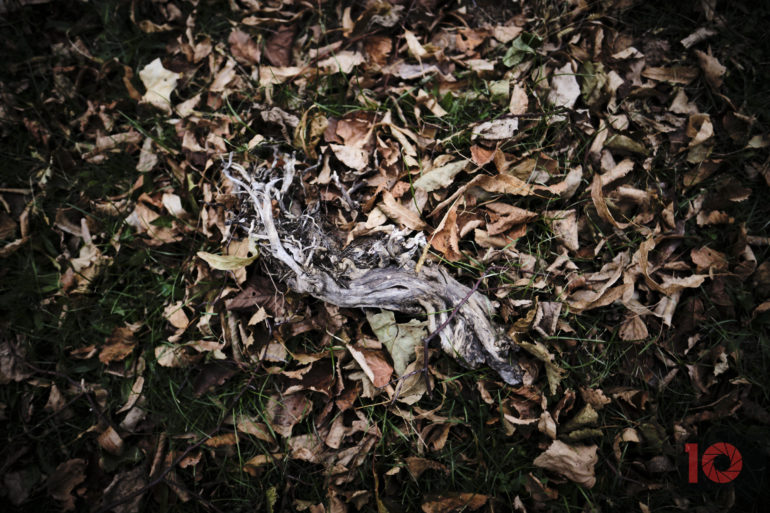
Pros and Cons
Pros
- Superia is beautiful (Classic neg)
- We dear the lack of a major screen
- Autofocus can be fine-tuned for unlike situations
- Everyone loves the look of Classic neg
- You can button the shadows for forever and get details – the highlights not equally much, only they're nonetheless there
- The screen helps you stay focused and aware
- USB C charging ensures that yous tin can keep using the camera
- Video features deliver pretty video
- Arguably, you don't need to edit the RAW files because the JPEGs let you practise then much
- For street and documentary shooting, the hidden screen volition keep y'all in the zone when shooting
- Face detection is fantastic when not trying to rails erratic movements
- Acros and clarity enhancements are going to brand y'all fall in honey with Fujifilm all over over again
- The Chrome effect for skies is subtle and very nice
- Autofocus is fantastic for events and most professional work
- Fujifilm'southward collection of small primes pair wonderfully with this camera
- The best photographic camera to embrace high ISO noise on the market
- Using the OVF will prolong battery life at the expense of slower autofocus
- This is less of a street camera than a documentary and effect shooter's camera
- The wider lenses make zone focusing easy. This is imperative for street photography
- Multiple exposure mode is a very welcome addition
- Very good battery life
Cons
- Has problems keeping subjects in focus when they're continuously moving
- When you need the screen, it's a bit of an badgerer; like when photographing a portrait subject in motion
- This photographic camera desperately needed Blackout Gratis EVF shooting
- Touchscreen menu navigation should be on this camera
- Autofocus needs improvements
- Rated images in-camera aren't brought into Capture Ane Pro. This is critical for the photojournalist.
- Enhancing the clarity makes the camera take extra fourth dimension to render the paradigm
- The battery life in long term use is well-nigh on par with the new Sony Z batteries. We wish it were longer, only it'south likewise a much smaller battery.
- For street shooting, the wide and tracking AF area yet lets you select a zone, but it shouldn't. This tin throw off shooting in real-life street situations
- Shooting from the hip? You may accidentally hit the role push and not the shutter release
- Exposure dial needs a locking mechanism
- Multiple Exposure mode saves the terminal images only every bit JPEGs
- The addition of prototype stabilization could accept meant that this camera has a better chance at becoming the perfect camera for street photography
Gear Used
We tested the Fujifilm X Pro three with:
- Fujifilm 16mm f1.iv R WR
- Fujifilm 56mm f1.2 R
- Fujifilm 35mm f1.iv R
- Fujifilm 23mm f1.4 R
- Profoto B10
Tech Specs
Tech specs for the Fujifilm 10 Pro iii taken from official Fujifilm press release:
- 26.1MP APS-C X Trans Sensor
- Dual SD Card slots
- Classic Negative Film simulation mode
- New Multiple Exposure enhancements
- Subconscious Tilting LCD Screen. 3.0 inch, attribute ratio three:2, approx. 180 degree tilting 1.62 millions dots bear on screen color LCD monitor
- Reverse Galilean viewfinder with electronic bright frame brandish
- 0.5 inch approx. iii.69 millions dots OLED Color Viewfinder (iv:3)
- E-Ink display
- Weather sealing
- Titanium Tiptop and lesser plates
- ISO 160-12,800 standard
- 4K video
- USB-C
- Approx. 497g / 17.5oz (including battery and SD retentiveness carte du jour) Approx. 447g / 15.8oz (excluding battery and SD retentivity card)
- (W) 140.5mm × (H) 82.8mm × (D) 46.1mm / (W) 5.5in × (H) iii.3in × (D) i.8in (minimum depth 34.8mm/i.4in)
- Three colors: Blackness, Dura Black and Dura Silver
Ergonomics
Taken from our first impressions
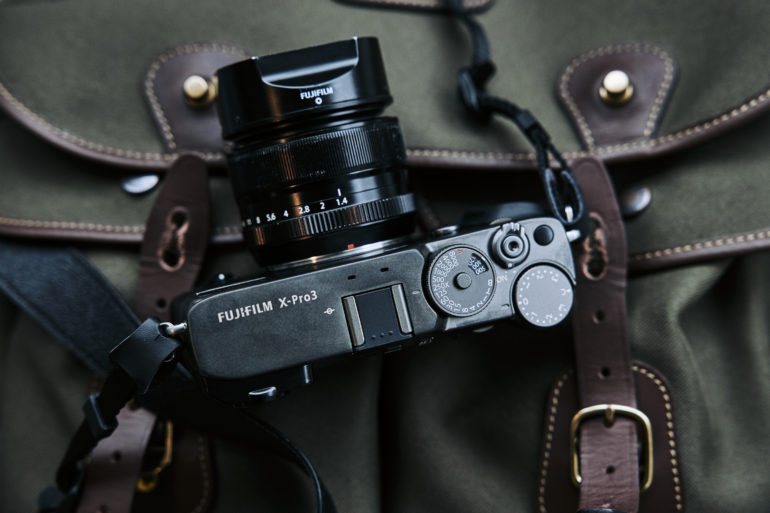
Aside from the model name etching, the top of the Fujifilm X-Pro 3 looks basically identical to its predecessor. The hot shoe, combination Shutter Speed & ISO Dial, On/Off Switch, Shutter Release, Exposure Compensation Dial, every bit well as a customizable push button are all located up top.
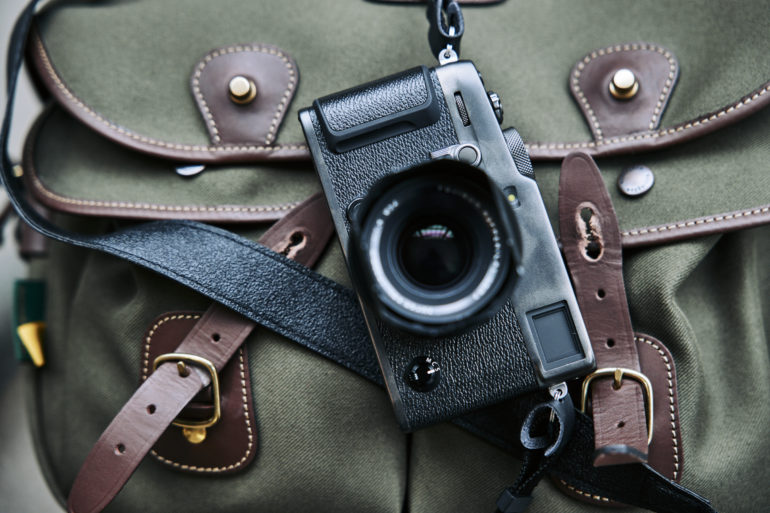
Towards the front of the photographic camera, you'll the front dial, the toggle lever for the Hybrid OVF/EVF, lens release, also as the Focusing Mode Punch.
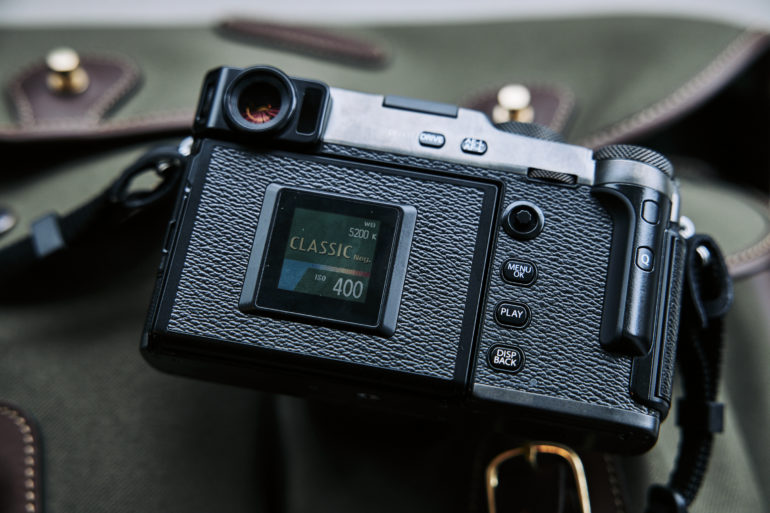
The rear of the Fujifilm X Pro 3 is where you'll find the nearly noticeable design change. Where you would ordinarily notice an LCD is replaced by a square E-Ink display that's ever on. This is designed to mimic the window on analog cameras of yesteryear where you would slip in the finish tab of your film box to remind you lot of the film loaded within. Aside from the ever-on display, a number of buttons are located on the back of the X Pro iii. These include the Drive Way button (which doubles as the delete button), AE-L/AF-Fifty button, rear scroll wheel, joystick, Menu/OK button, Playback button, too as the Display/Dorsum button. The other customizable button and the Quick Carte push button tin be constitute on the thumb rest.
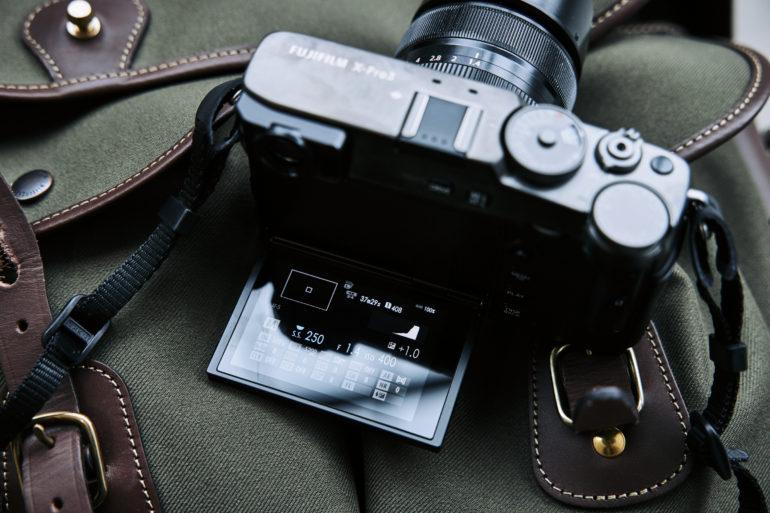
In case you were afraid Fujifilm had removed the LCD birthday, rest assured that the X Pro 3 still has one. The touchscreen LCD is tucked abroad past default and tin can be accessed by folding downwardly the rear panel.
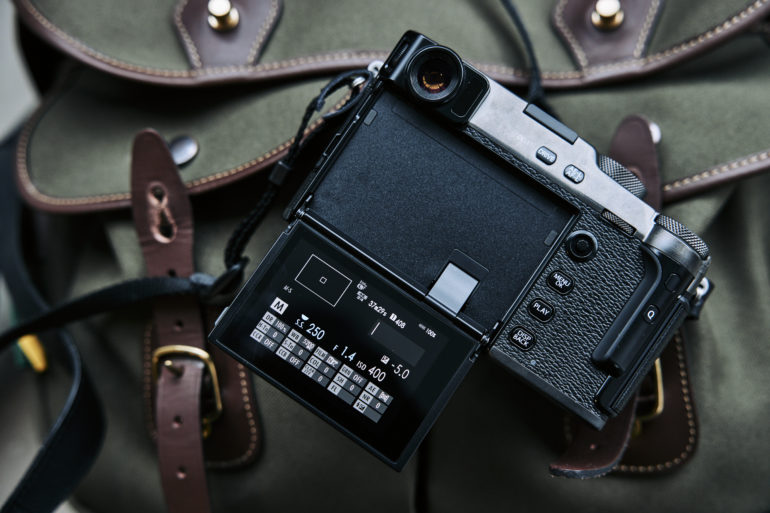
The touchscreen can exist folded downward all the way but does non characteristic a tilting mechanism.
Build Quality
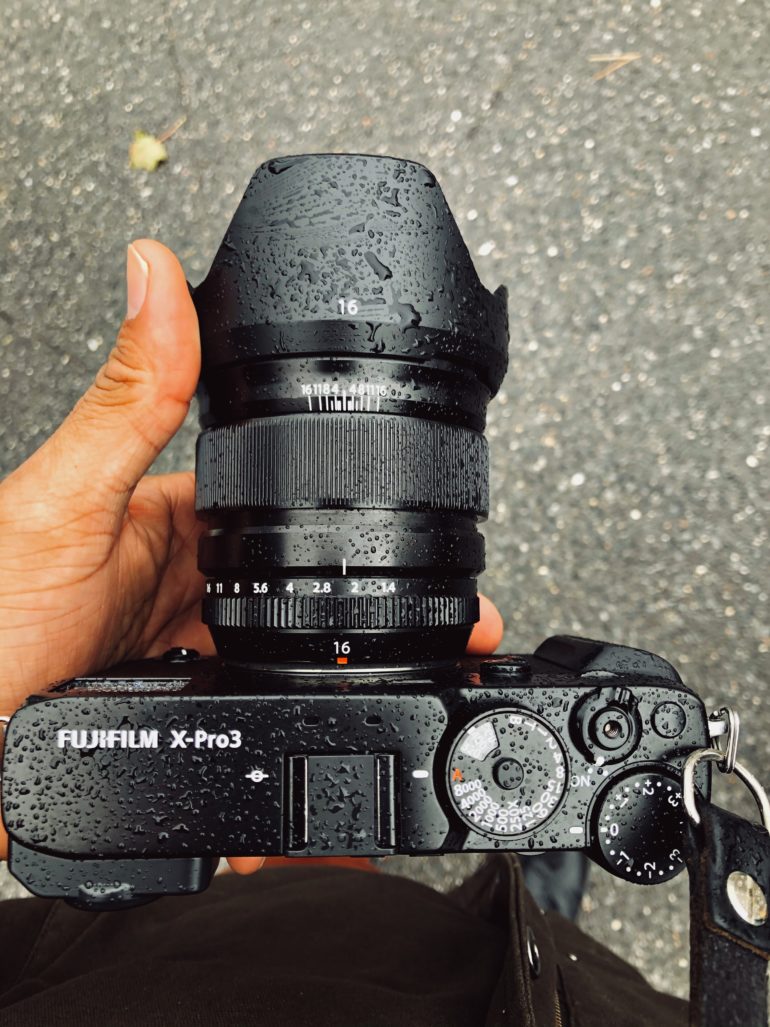
We took the Fujifilm X Pro three in the pelting on a number of occasions, which it withstood with ease. Photographers shouldn't be afraid of going out and shooting in the pelting. More importantly, if you're the type of street photographer who wants to shoot in the rain, pair it with the 16mm f1.4 R WR. This lens is atmospheric condition-sealed and information technology's likewise got the zone focusing mechanism on the focusing ring. It's pretty perfect for this type of shooting feel. There wasn't a unmarried fourth dimension where I lacked confidence in the Fujifilm 10 Pro three's ability to handle what we threw at it.
In the paw, the Fujifilm X Pro three feels a lot more sturdy than its predecessor, with a bit more of a grip to hold onto. It's very dainty. To be honest, it's somewhere between holding a Leica and a Fujifilm XT3. Photographers are bound to actually like it.
Ease of Utilise
We're going to driblet a few major truth bombs here when it comes to the ease of use. If yous're an experienced photographer, then you're going to love this photographic camera. If you don't demand to chimp every photo yous take, then you're going to adore it. If you don't use the LCD screen often or even at all, the Fujifilm X Pro three is the camera for you. If you're the newer type of photographer I see on photowalks that needs your screen, then you're going to gawk at this camera. The screen is only a mild difficulty when it comes to working with portrait subjects, simply it's not too awful. For event shooting and when shooting on the streets, the hidden LCD screen is a godsend. It will keep y'all focused and in the zone. (That'due south where you lot should be anyhow.)
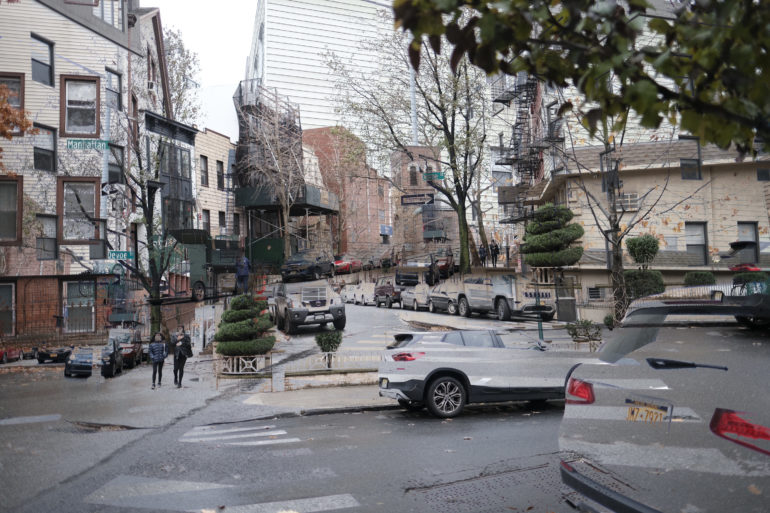 Where you'll probably become annoyed is with the new Fujifilm Multiple Exposure features. Fujifilm had this in their cameras for a long time, but non to the degree of layering nine images. Unfortunately, the stacked images are only bachelor as JPEGs. Canon lets you keep your RAW originals and makes the multi-exposure photo a RAW. Then, this is a bit of a let down. On the other mitt, I condition myself to create better JPEGs anyway.
Where you'll probably become annoyed is with the new Fujifilm Multiple Exposure features. Fujifilm had this in their cameras for a long time, but non to the degree of layering nine images. Unfortunately, the stacked images are only bachelor as JPEGs. Canon lets you keep your RAW originals and makes the multi-exposure photo a RAW. Then, this is a bit of a let down. On the other mitt, I condition myself to create better JPEGs anyway.

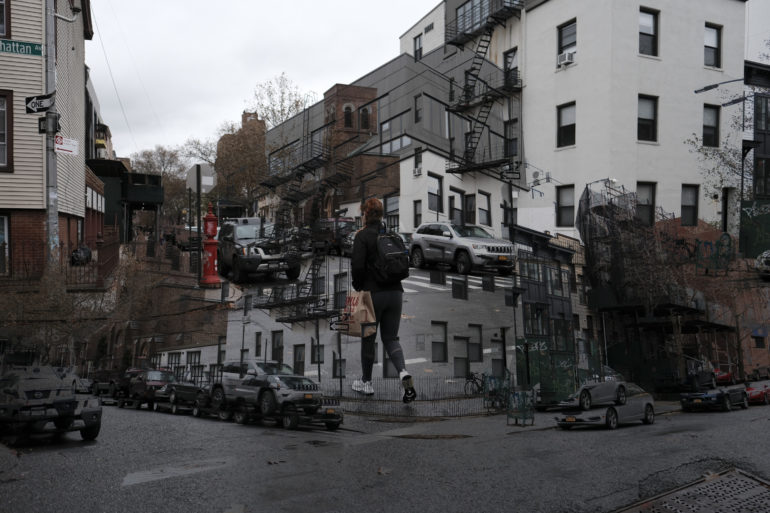
Autofocus
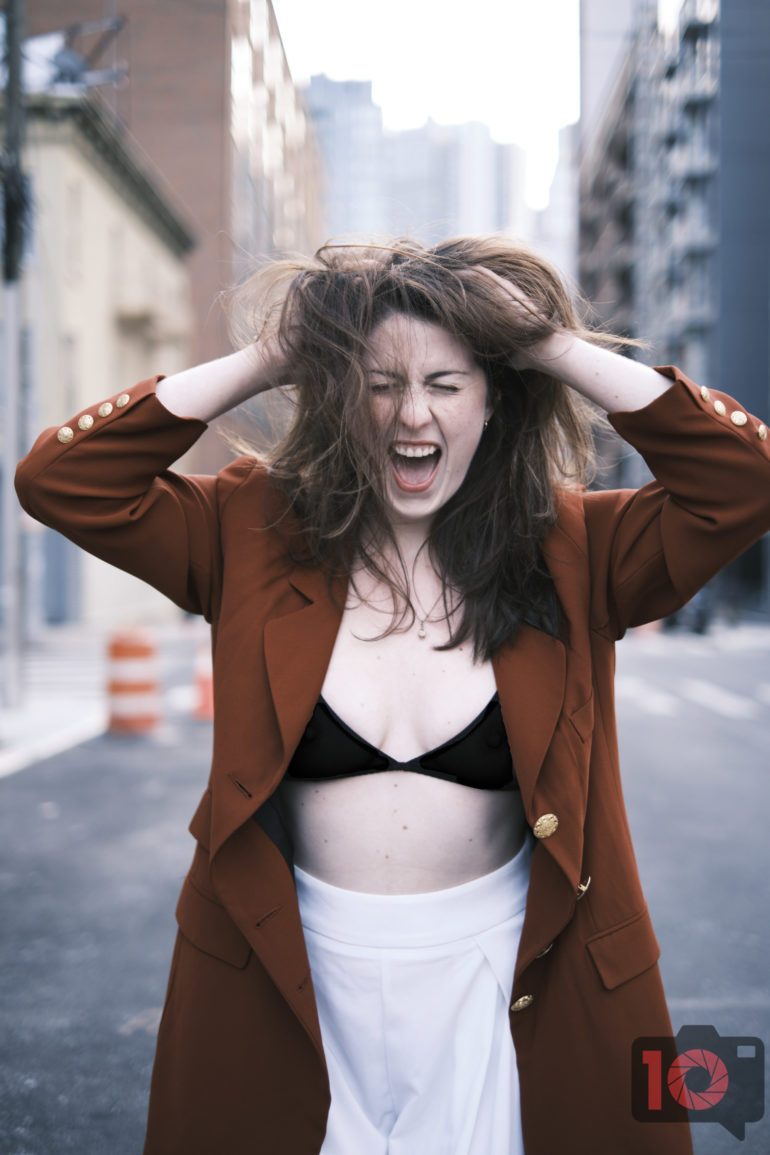
Though the Fujifilm X Pro 3 isn't necessarily meant for fashion shoots, the autofocusing algorithms straight out of the box spoke volumes to me. When we shared these images on Facebook, many were quick to indicate out that the autofocus wasn't keeping Casey'due south face locked. In theory, that will hateful street photographers will have a tough fourth dimension if they're trying to use the autofocus. This problem occurs in both depression light and adept low-cal. Here are more image samples.
Editor's Note: This series was edited for modesty.
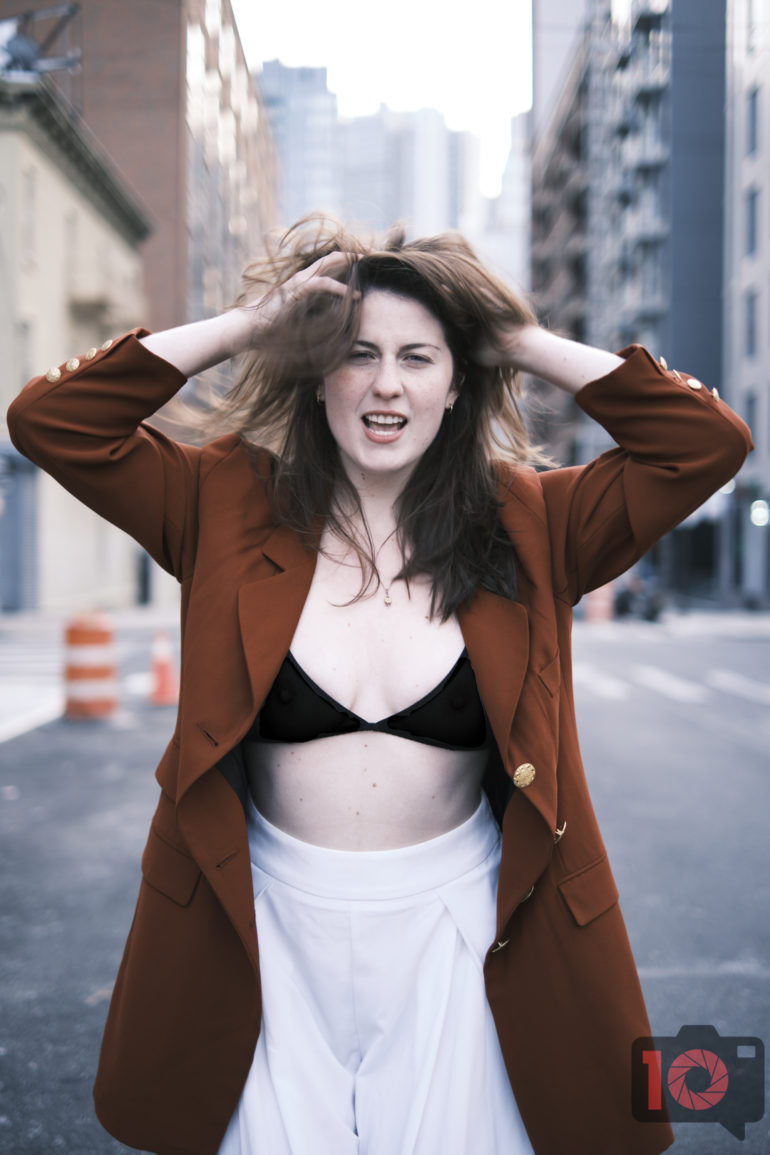
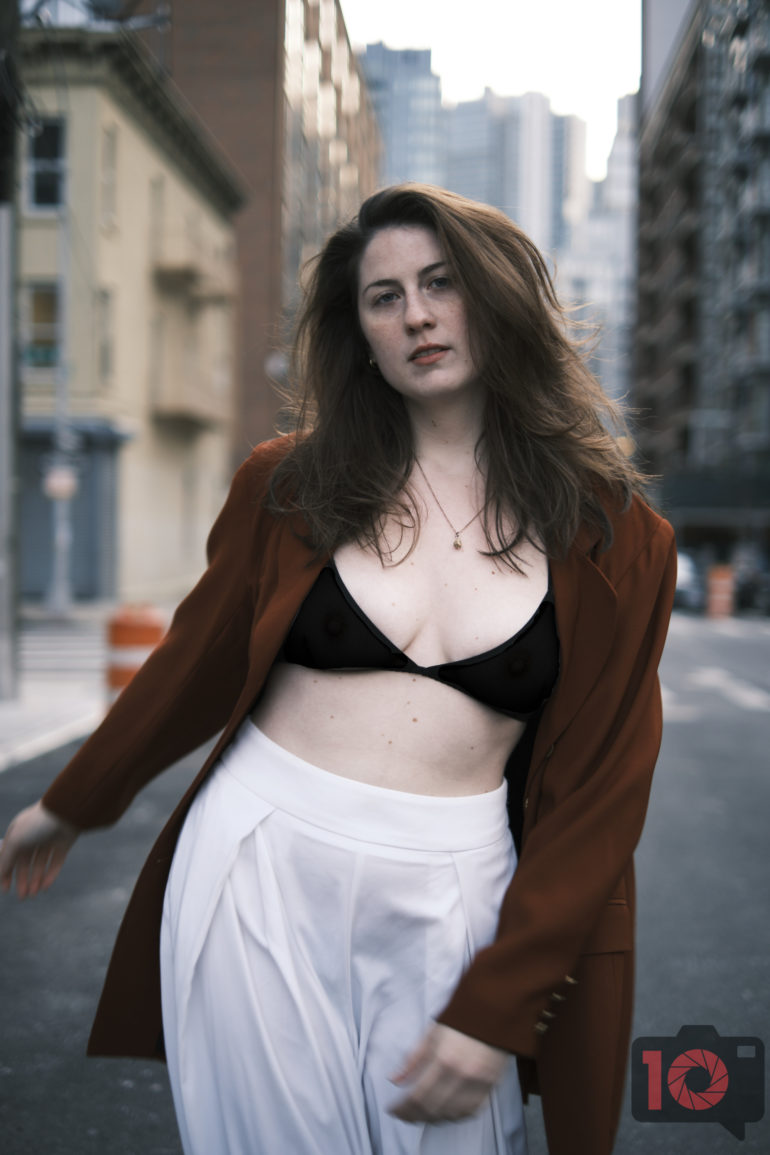
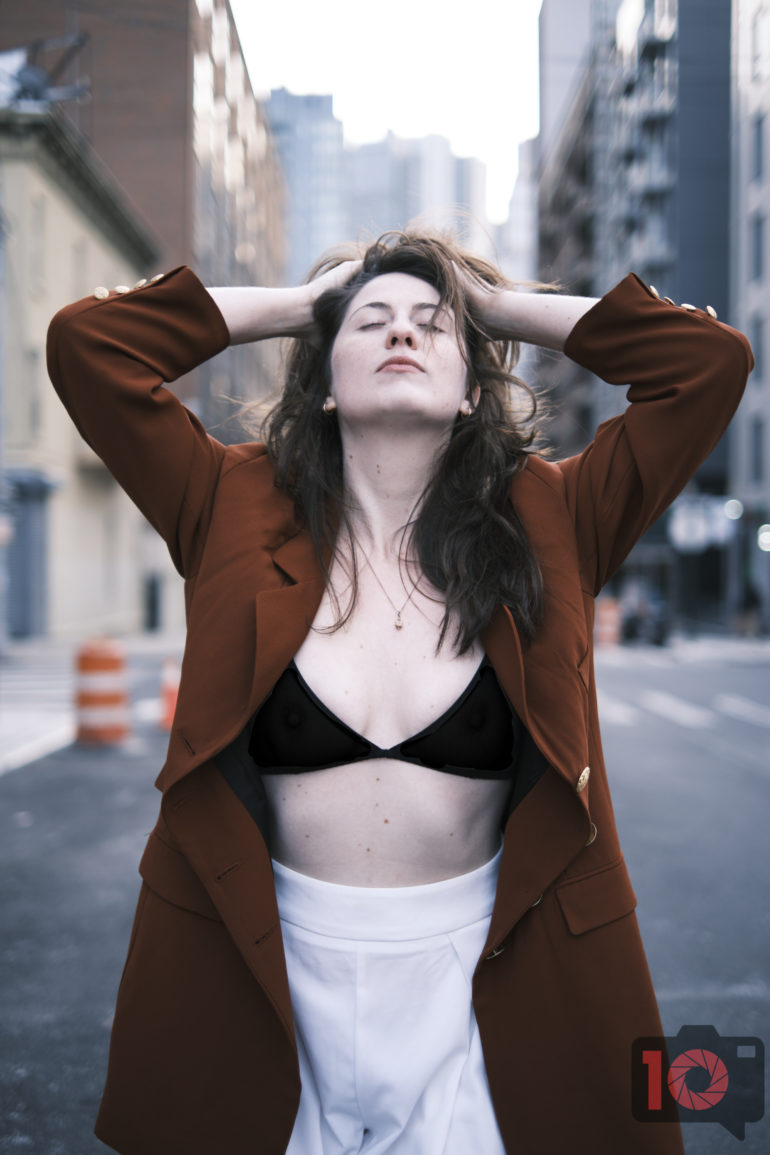
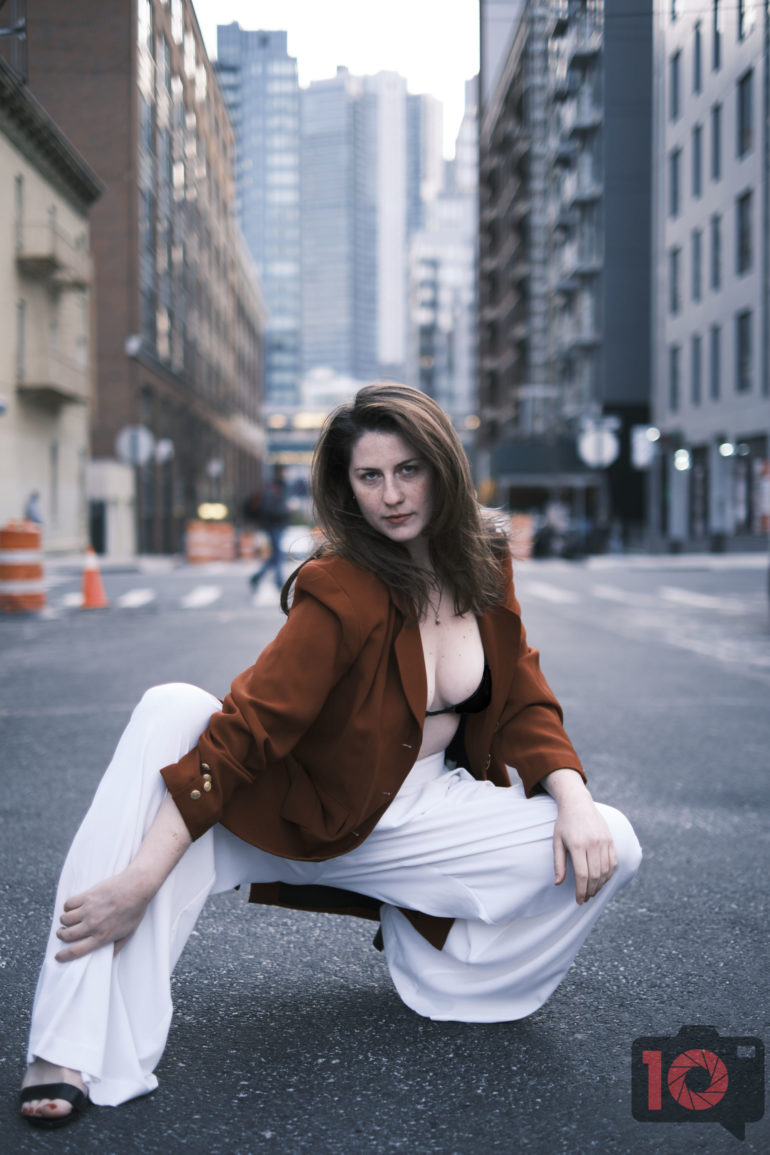
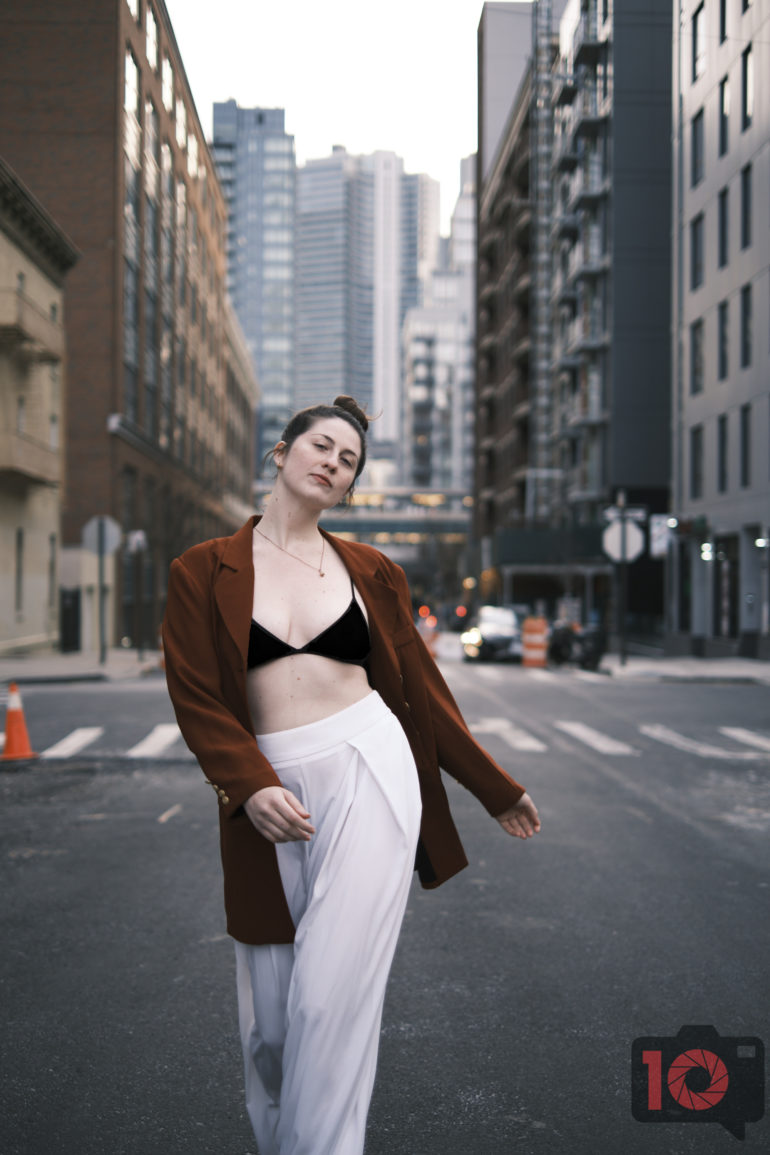
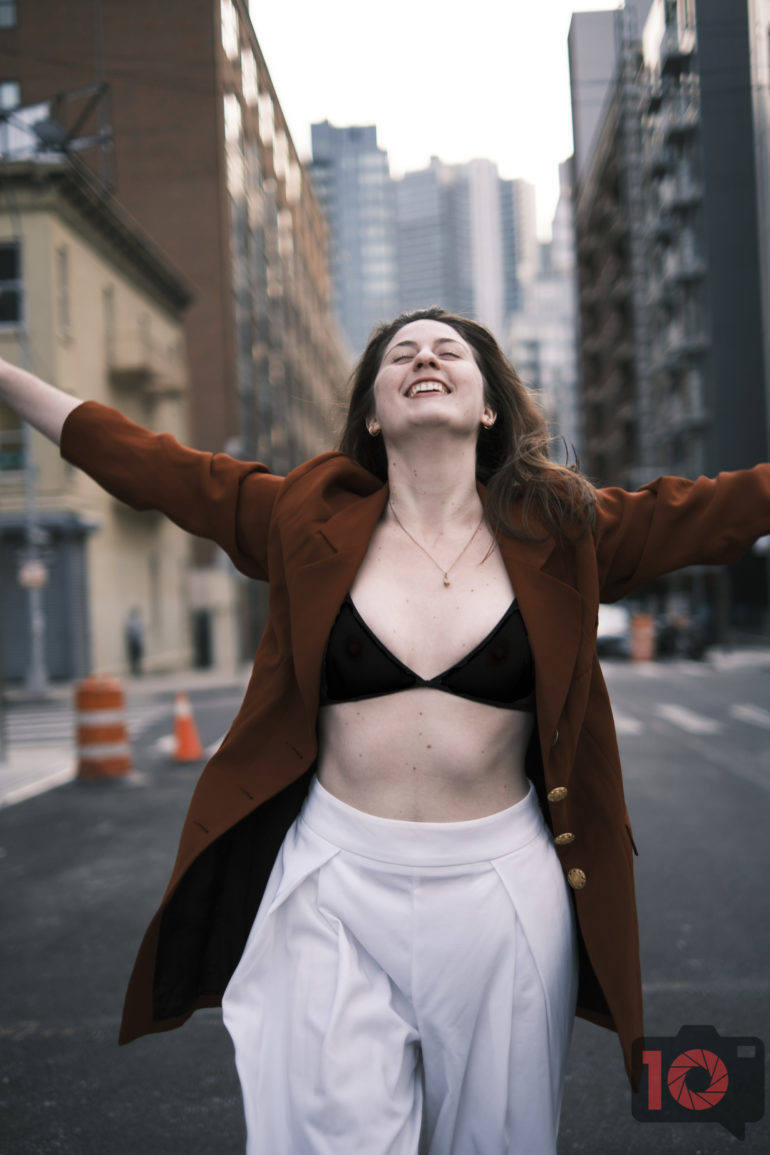
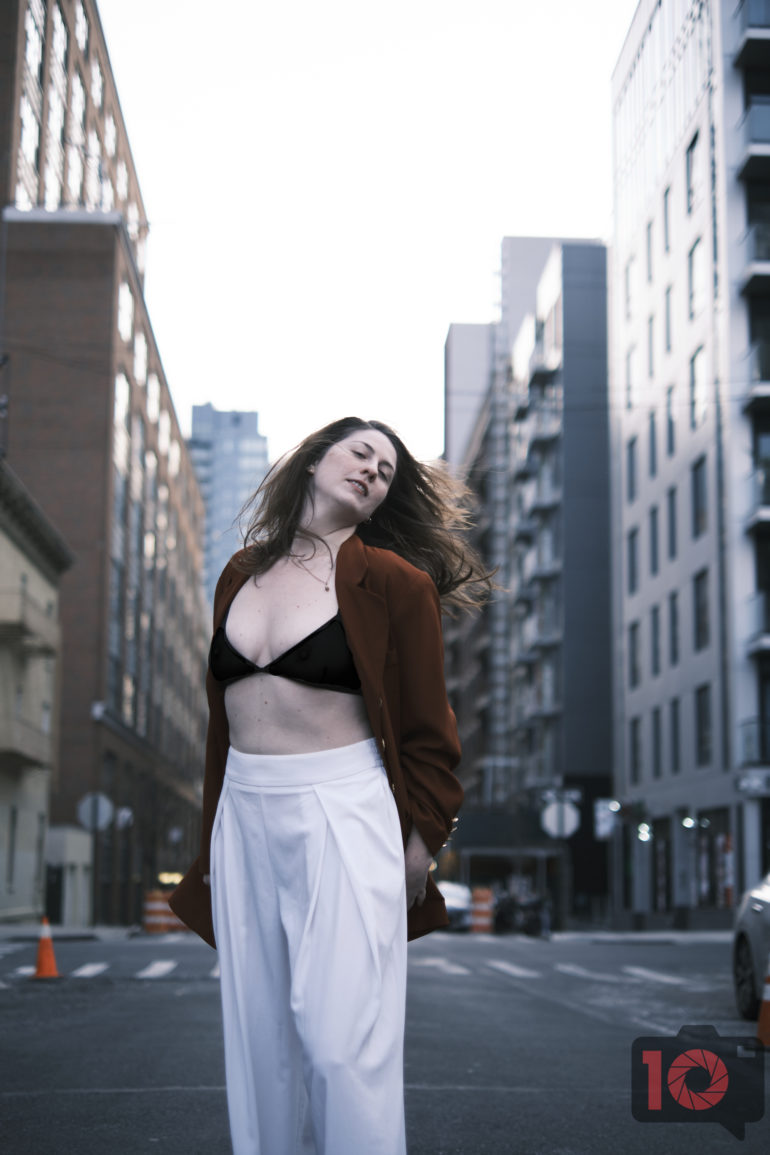
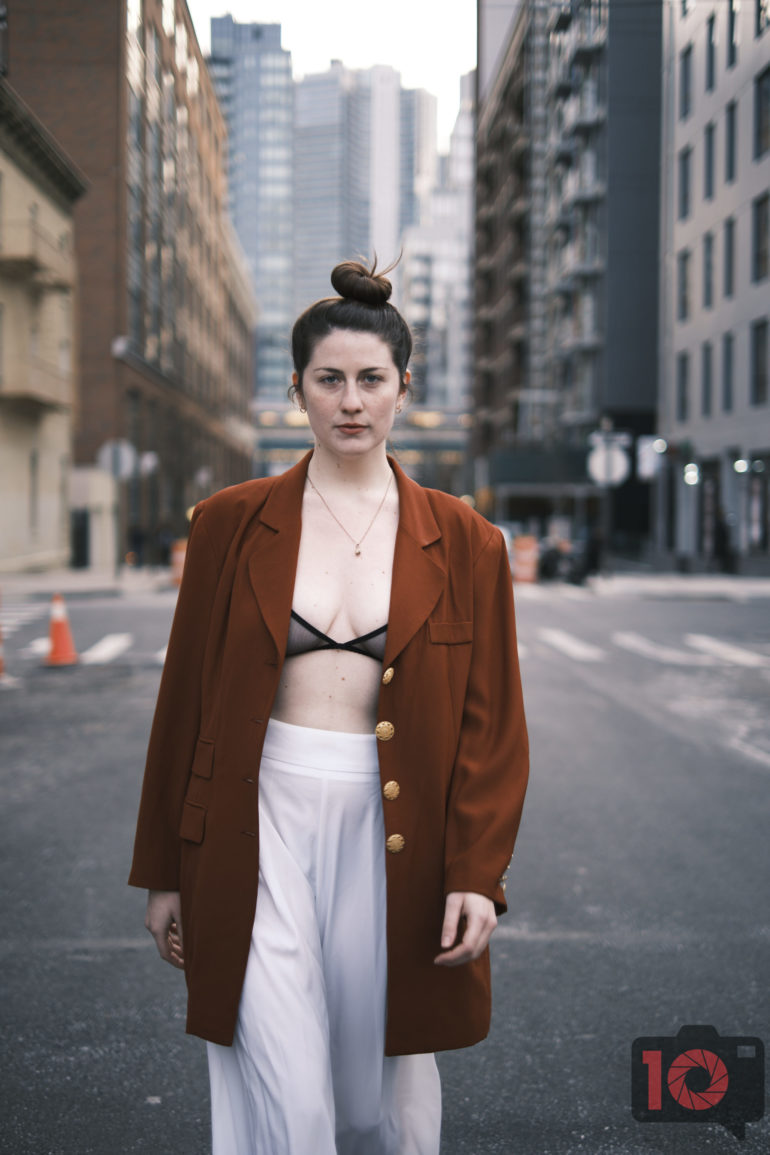
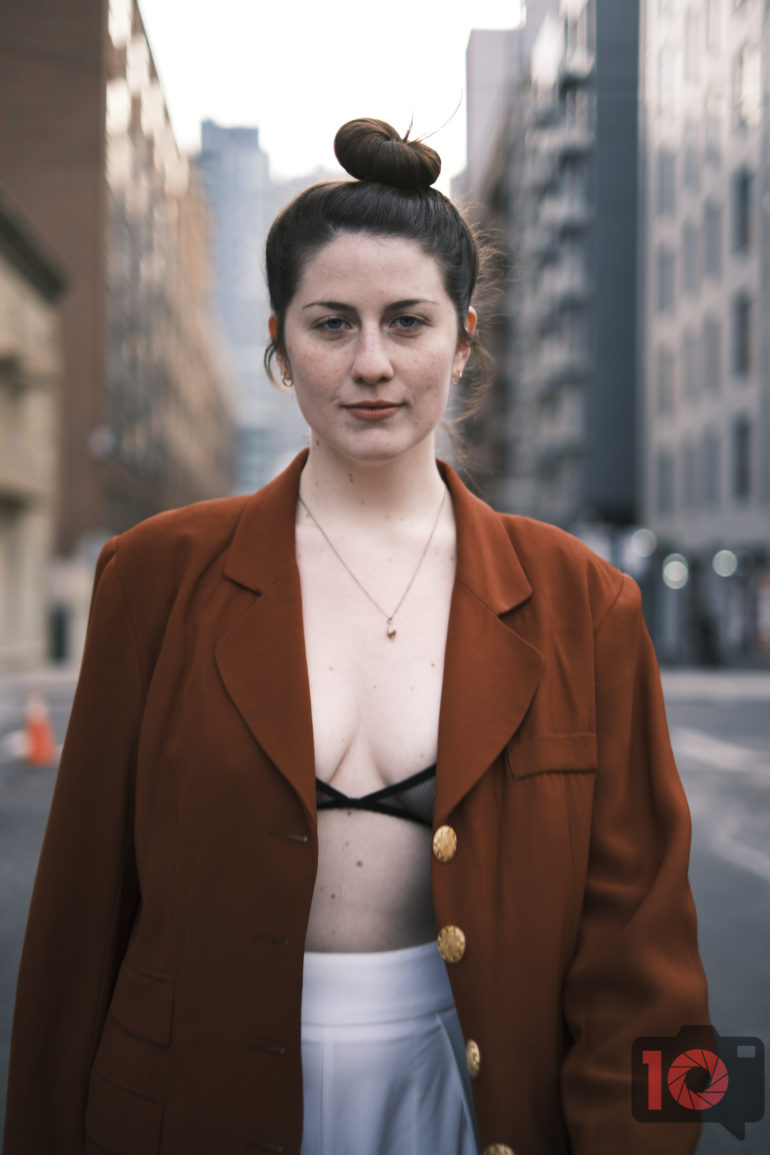
Equally you lot can see it's a very mixed bag. Merely when it comes to working in the studio with a dancer generally staying in place, the Fujifilm X Pro 3 was able to keep up. To explain this further, nosotros tweaked the AF-C settings in the carte to cater to the subject field. While this helped a lot, information technology means that every time you get-go working with a different subject blazon, you'll need to tweak it. With that being the example, you may desire to fix this to a specific custom button. I didn't in the cease, but you may accept dissimilar needs than I exercise.
The best results come from shooting with wider angles. Of course, this is because of the laws of physics and how much of a scene is in focus at a given discontinuity. Here are those studio results.
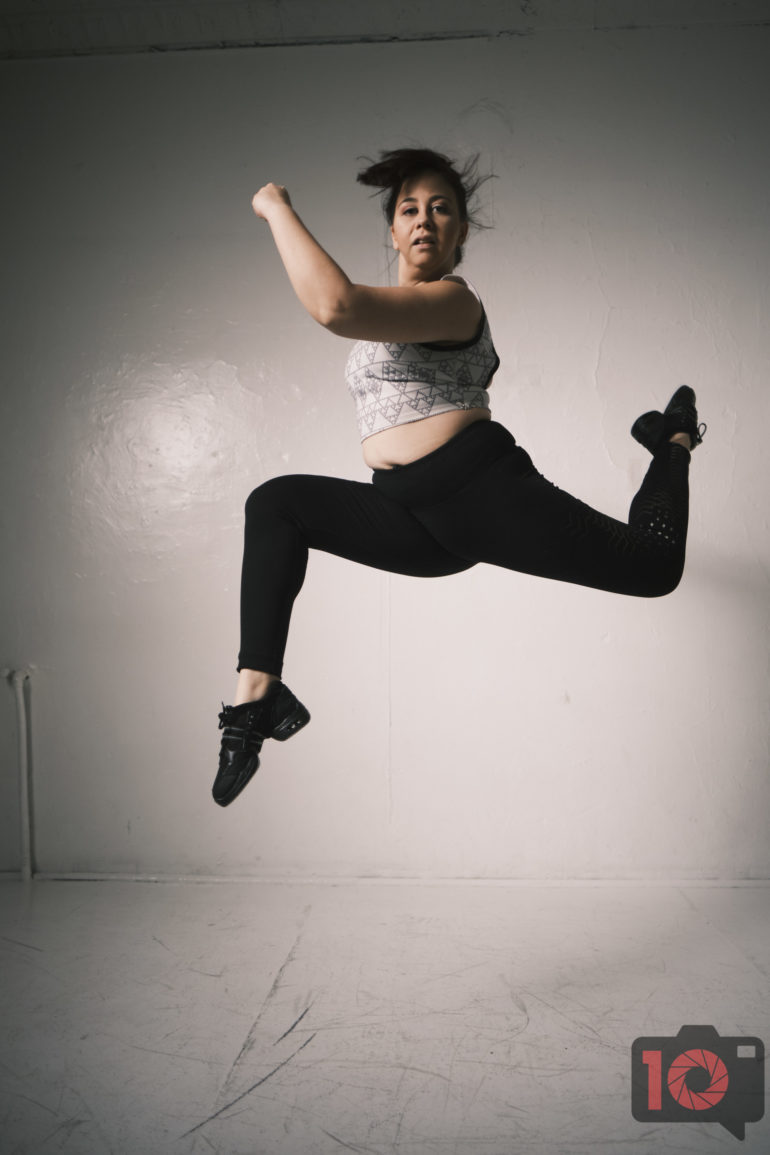
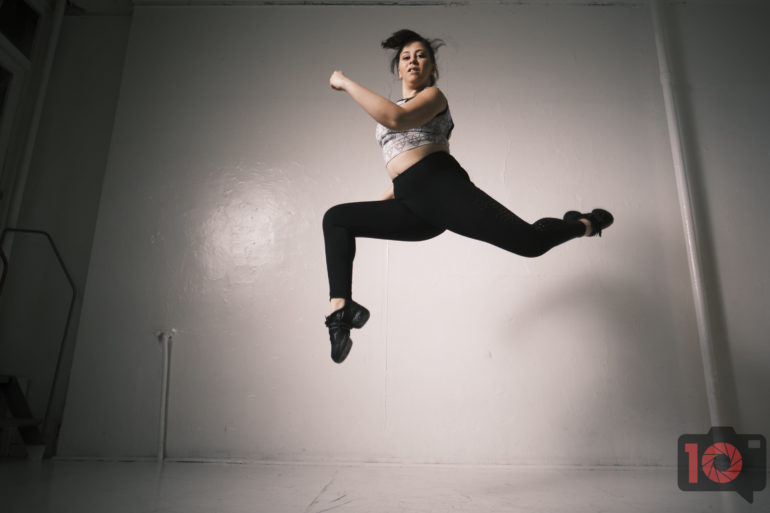
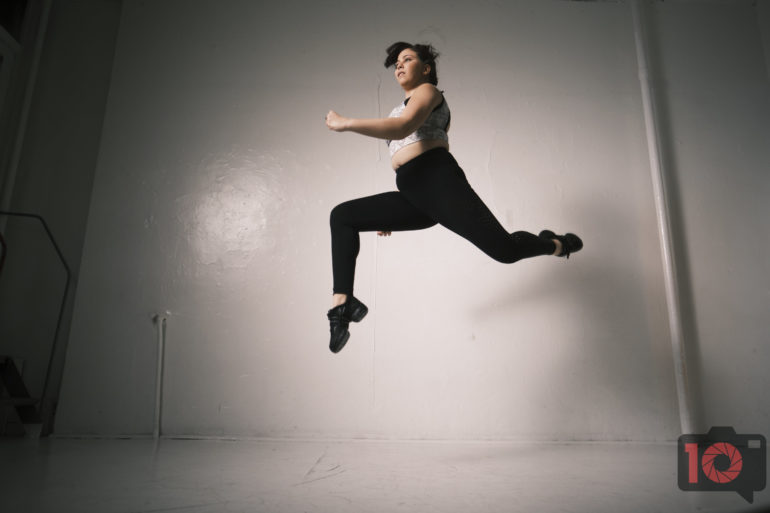
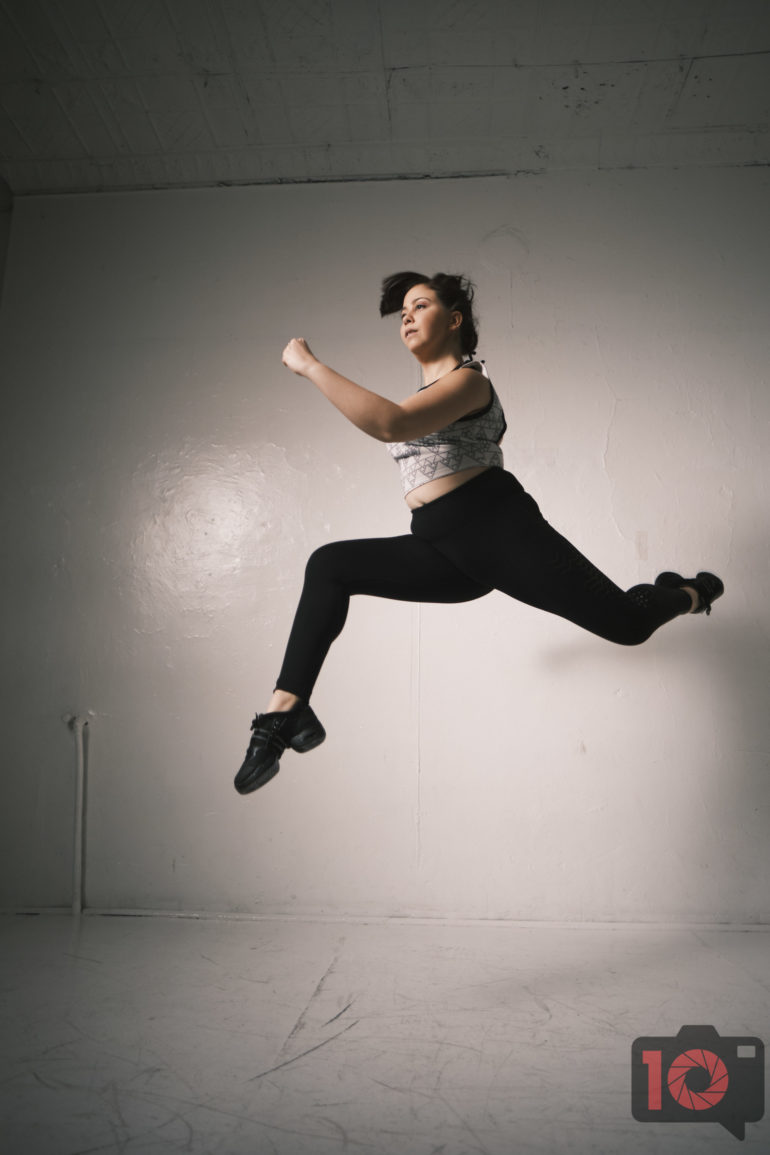
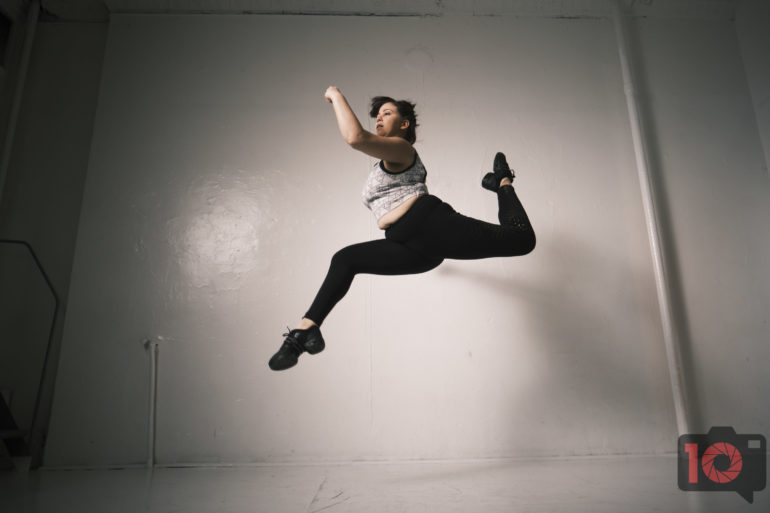
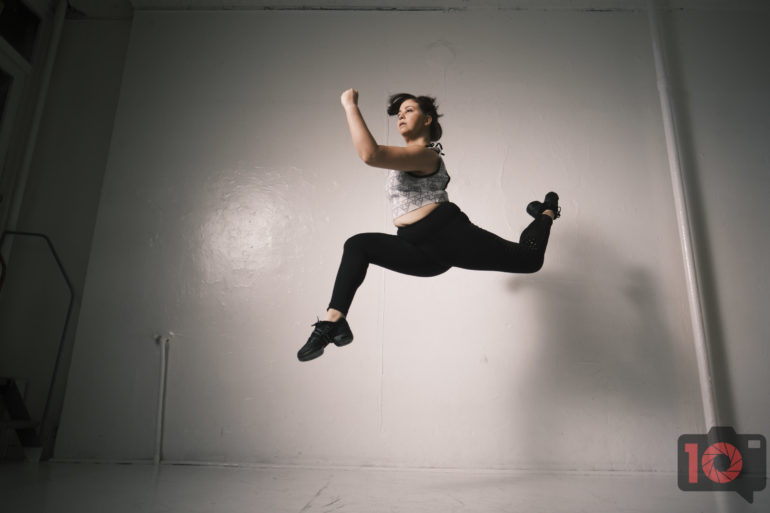
Truthfully speaking, we had a lot of difficulty with the autofocus of the Fujifilm X Pro 3 on the streets. When it came to keeping moving subjects in focus moving across different planes, it proved very difficult when shooting with a lens wide open. If subjects stayed on the same plane, then things were easier. Here's a series where not a single photo was in focus.
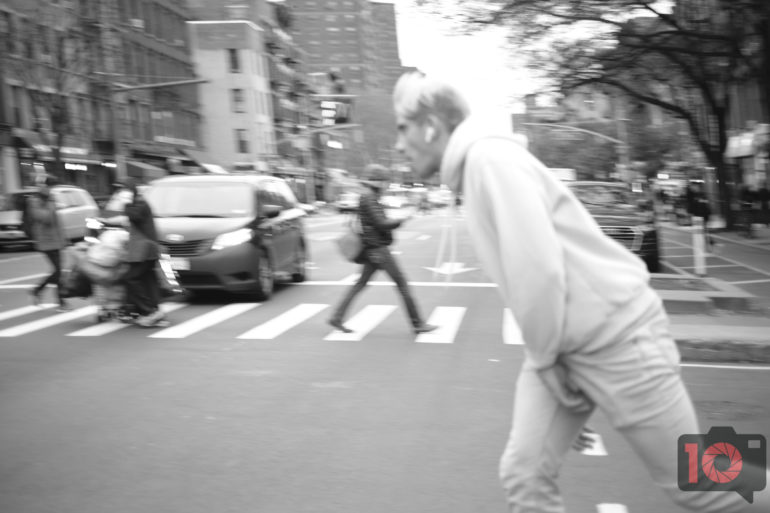

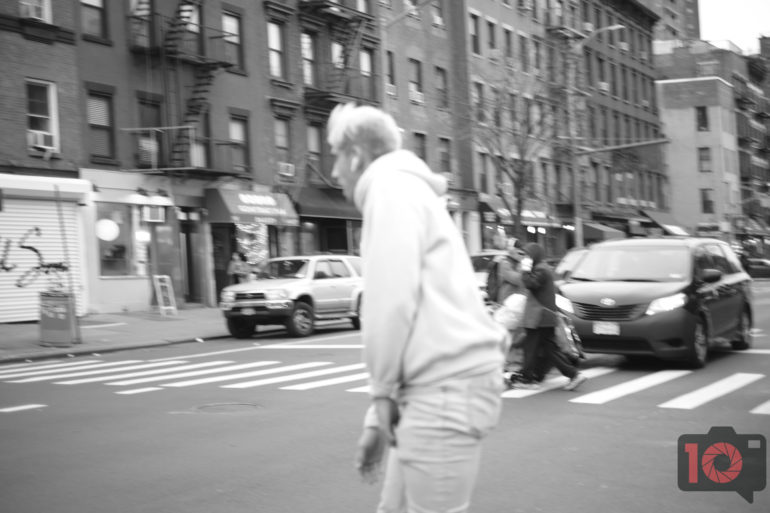
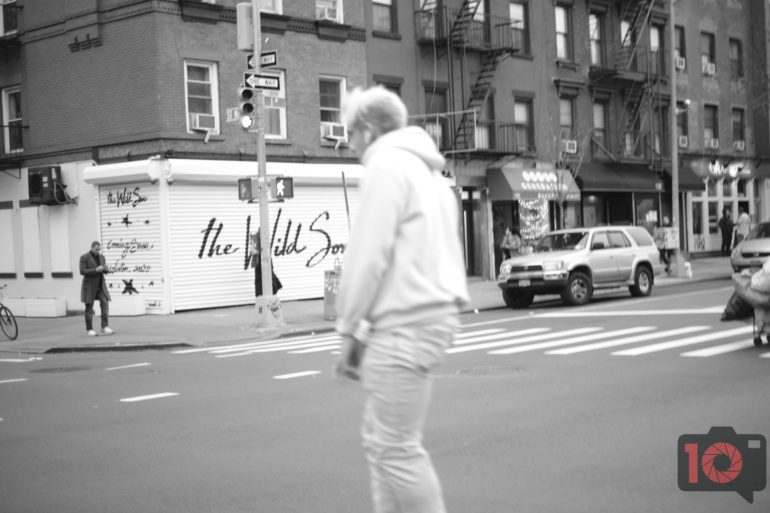
The matter that I found which actually trips up the Fujifilm X Pro 3 is face up detection with sunglasses on. In the photo below, I genuinely experience like the Ten Pro 3 should accept nailed it. But information technology didn't.

When information technology comes to street photography, photographers using the Fujifilm 10 Pro iii will demand to rely on the ability of the wider lenses to zone focus. Ideally, you lot should spring for the 16mm f1.four R WR, however, the 23mm f1.4 tin also do a great job. Either way, it's important to zone focus. Of course, you can exercise this in camera and setting it using the calibration and focus peaking. But to me that'due south a scrap distracting.

Epitome Quality

The Fujifilm 10 Pro three is all about embracing flaws in some ways while playing around with the idea that you don't need to edit your photos. The Fujifilm X Pro iii has a lot of peachy enhancements to it like the add-on of the clarity setting to your images. Beyond that, the Classic Chrome effect is enhanced past a few menu slot additions. Farther, Fujifilm's addition of the Archetype Negative look will make everyone really overjoyed. Looks that were only possible with Mastin Presets and those from RNI or VSCO are now attainable correct out of the photographic camera.
About the Clarity Addition

1 of the coolest things nigh the Fujifilm 10 Pro 3 is the improver of clarity adjustments to the photos. Fifty-fifty cooler, the clarity adjustment is done to both the RAW file and the JPEG file. And what meliorate way to make the await of Acros pop fifty-fifty more? When working with the Fujifilm 10 Pro iii in the streets, I created images that I seriously fell for when using the diverse Acros settings and enhanced clarity. Be warned though, using the enhanced clarity will make your images take longer to procedure.




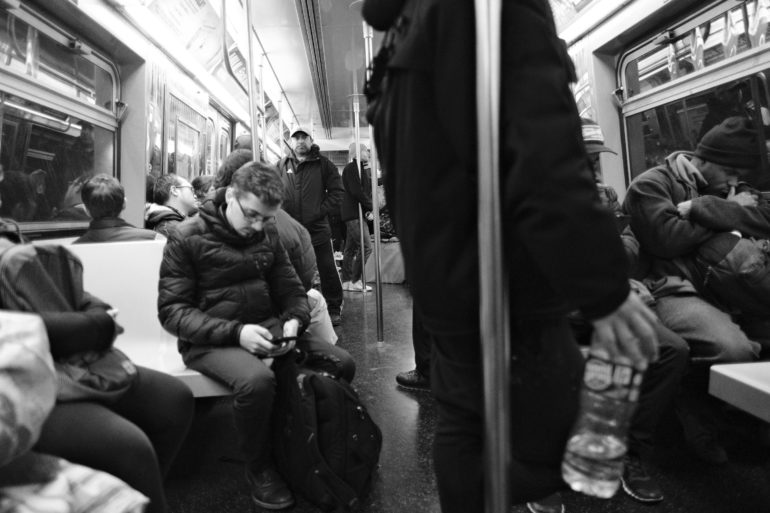
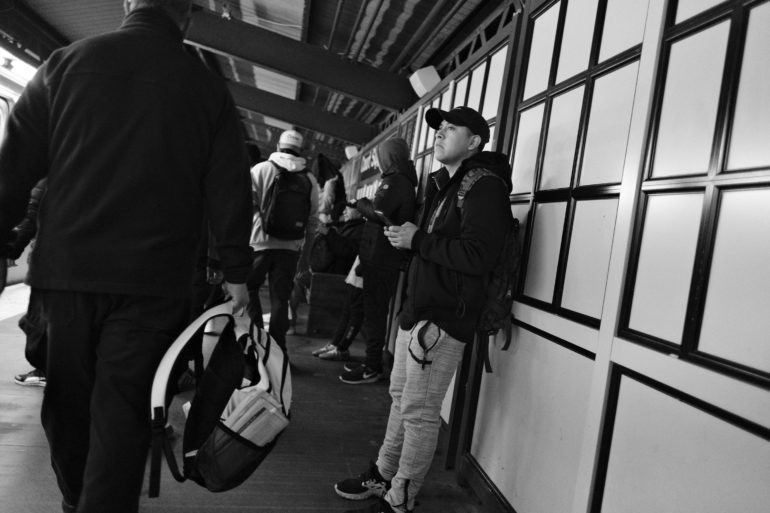

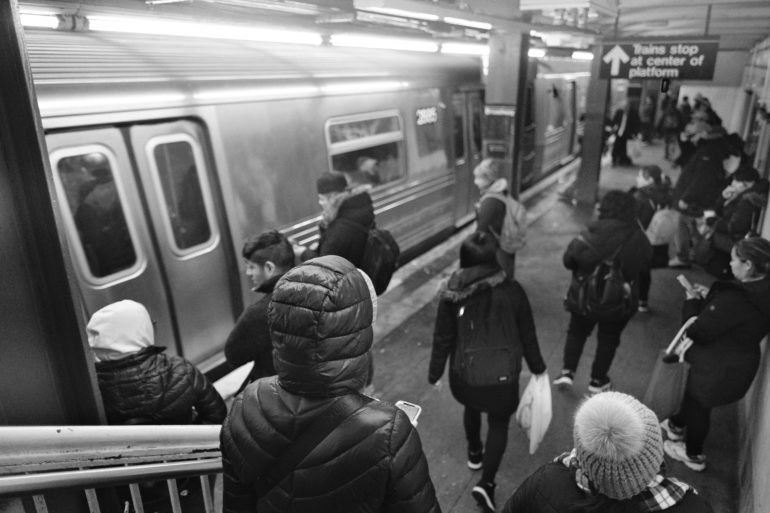
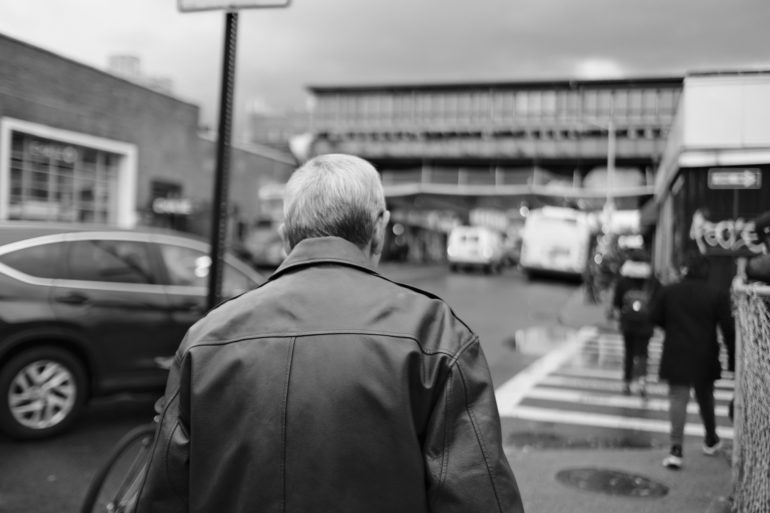


RAW File Versatility
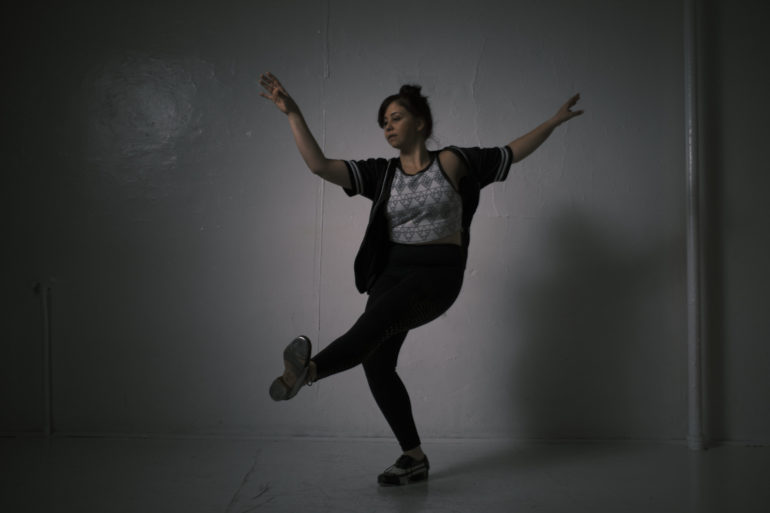
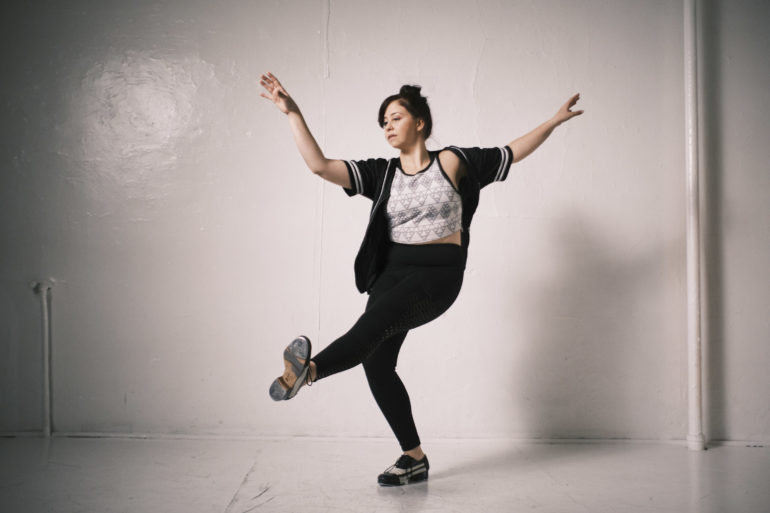
The Fujifilm X Pro iii is fantastic when information technology comes to the photographic camera'due south RAW file versatility. You lot tin can come across we were able to recover a ton of details from the shadows. By modern camera standards, that's pretty expected. What'south even better is that if you lot need to keep pushing a file, you tin simply encompass Fujifilm's Movie simulations and brand the image just look like grainy flick. This is an reward that simply Fujifilm and arguably Olympus has.
When information technology comes to recovering highlights in a photo though, it becomes merely slightly more problematic. You're not going to get all the details y'all will from the GF lineup. And this becomes fifty-fifty tougher when you're trying to comprehend that signature pastel look Fujifilm Classic Negative is trying to emulate. To explain this farther, information technology'south the wait of overexposed Fujifilm PRO 400H moving picture. The highlights are retained in the flick scans, but they won't be from the Ten Pro 3. With this in mind, it's improve to go it correct in the camera to start. And if you're a motion picture shooter, and then information technology means wrapping your head around this whole process in a different way.

Original

Edited

Original

Edited
High ISO Output
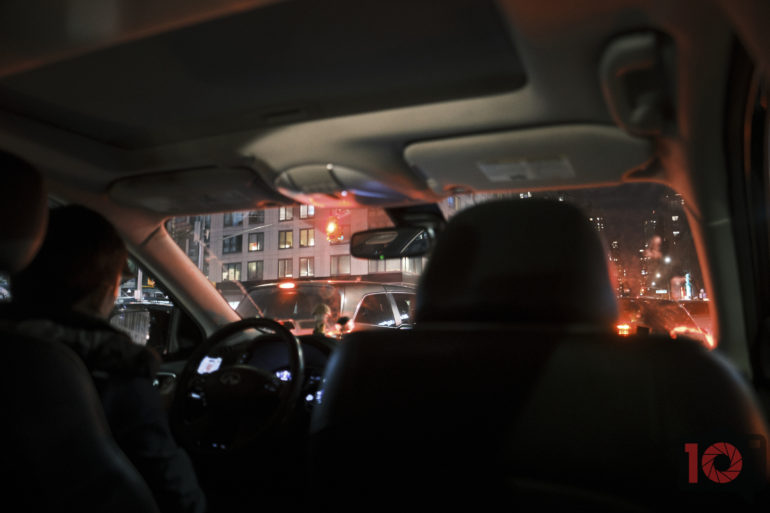
One of the best things most the Fujifilm X Pro 3 is the fact that at ISO levels 3200 and above, you lot'll get the look of grain. And to exist honest, this is the single best photographic camera on the market right now to embrace it. Ever seen the look of moving-picture show scans? This is what it looks like. With Fujifilm'south organic looking film simulations, you're not going to complain about the motion picture grain. When it comes to looking at the images digitally, you've got no serious reason to purchase whatever sort of presets that are film rendering. Of course, the options from Capture 1 and a few others are still very worth information technology. To that end, I call back any photographer making images at ISO 3200 and above should simply comprehend the look of film grain. Over again, this is why I love this camera. Instead of going with the trend of needing to take clinically make clean images, the Fujifilm X Pro three slaps that idea in the confront.
When it comes to prints, we made an image at ISO 6400 on the Canon Prograf 1000 with Pro Luster paper. The image was from the same shoot we did with the Sony a6600. In comparison, the Fujifilm X Pro 3 makes an ever and so slightly cleaner print when making 17×22 images. I'm very impressed. It'due south still not going to concur its own with some full frame sensors, merely in terms of the look you'll get, I remember that's very worth the tradeoff.


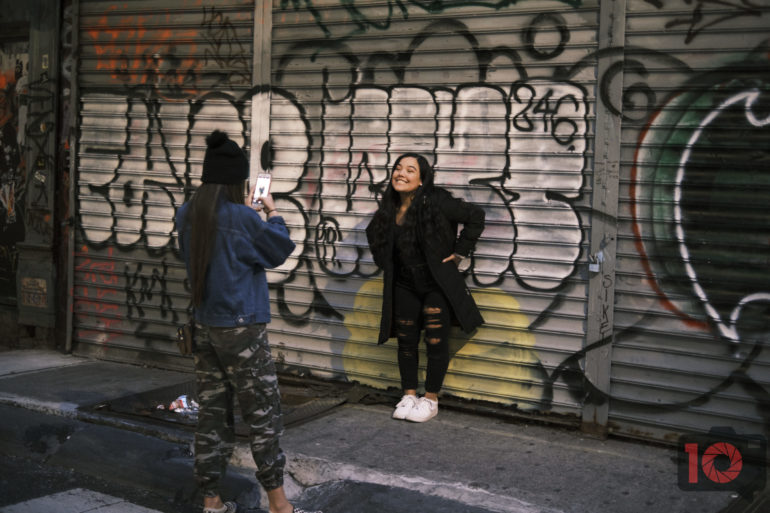


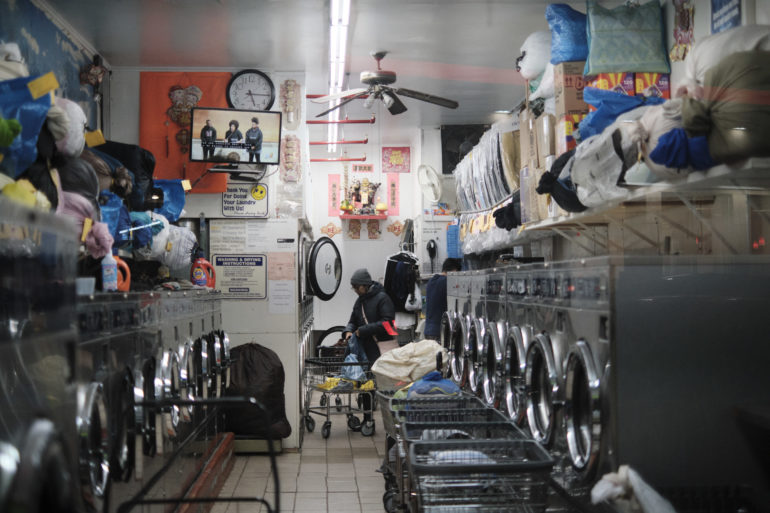

How Does the New Moving picture Simulation Compare?
We decided to go into our index and bring up some scanned Superia film to compare to the new Classic Negative moving picture simulation in the X Pro 3.
Below are images from the Classic Negative Await
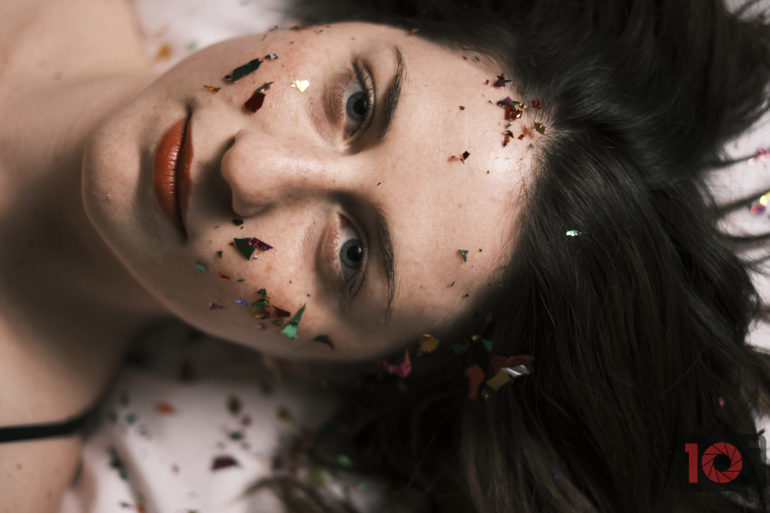

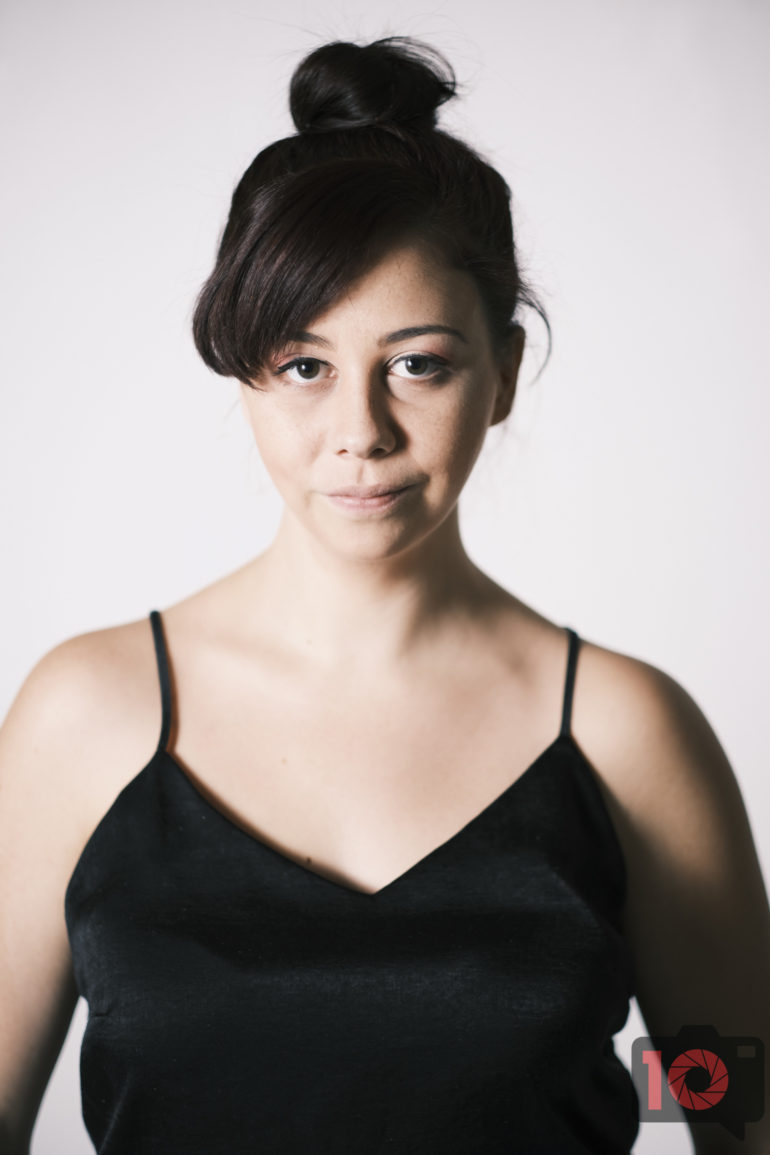
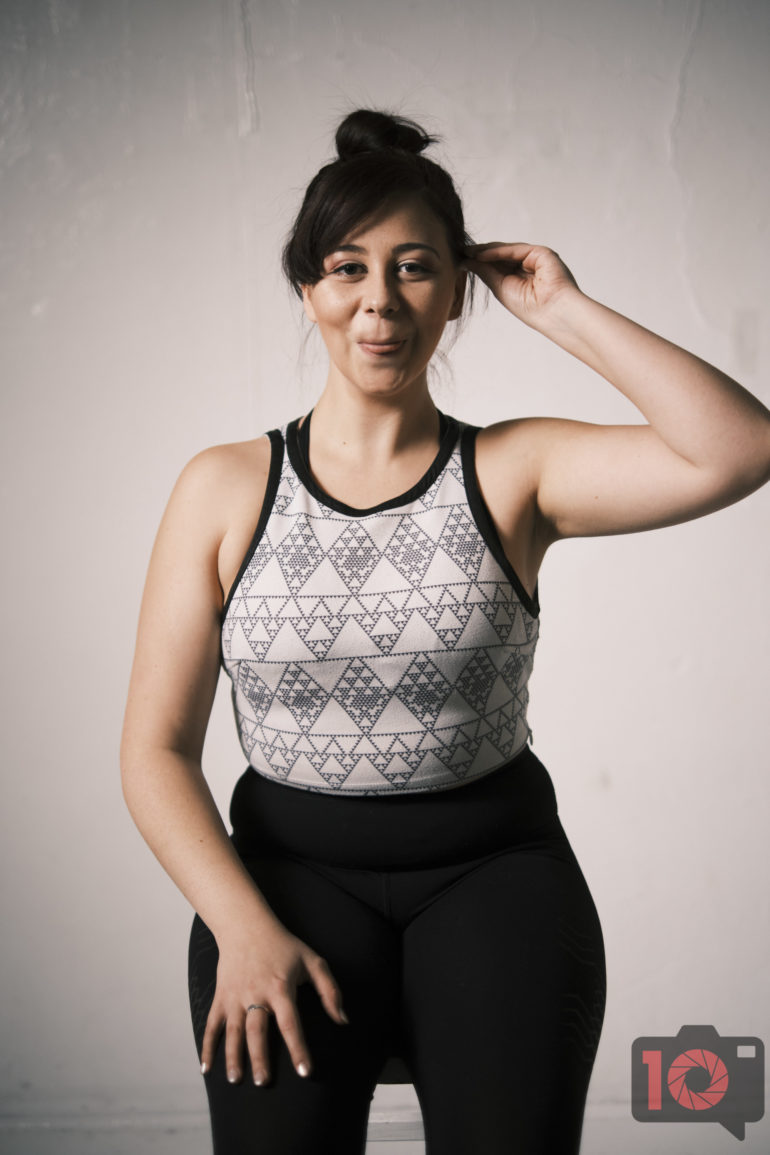
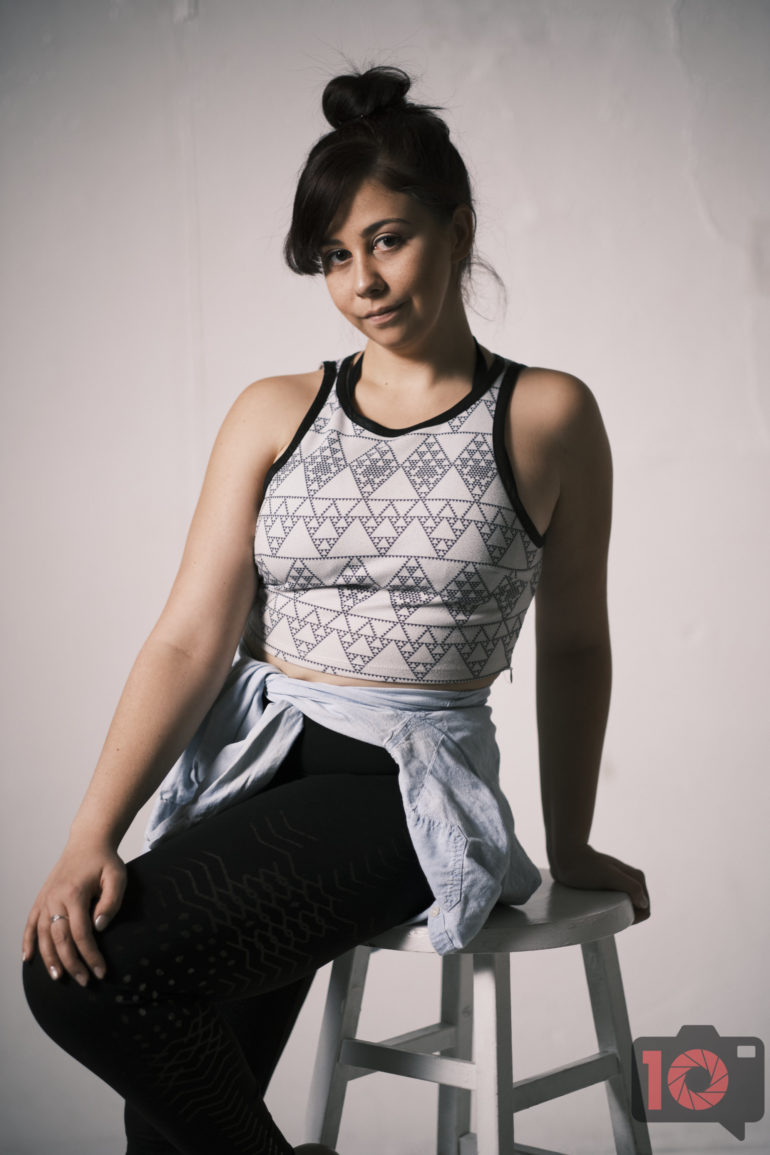




Beneath is real Fujifilm Superia

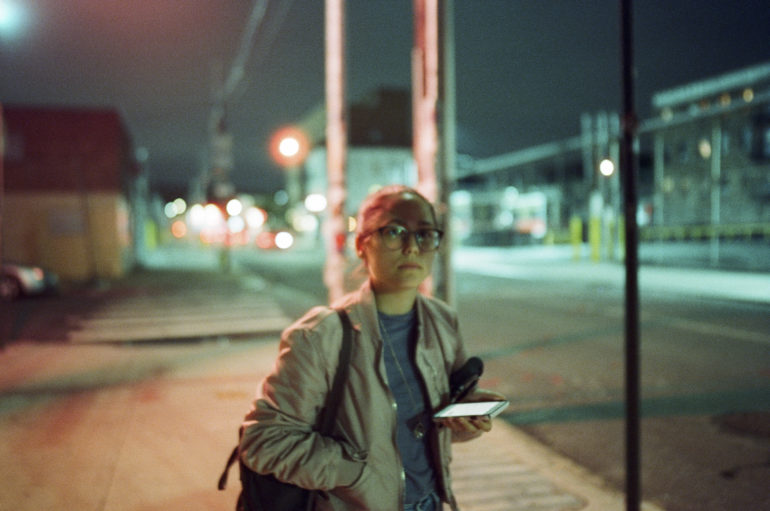


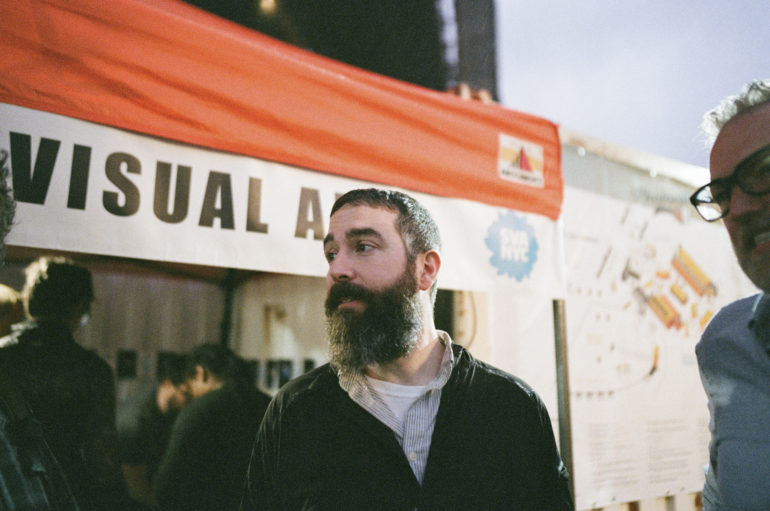



Fujifilm Superia 200 actual film
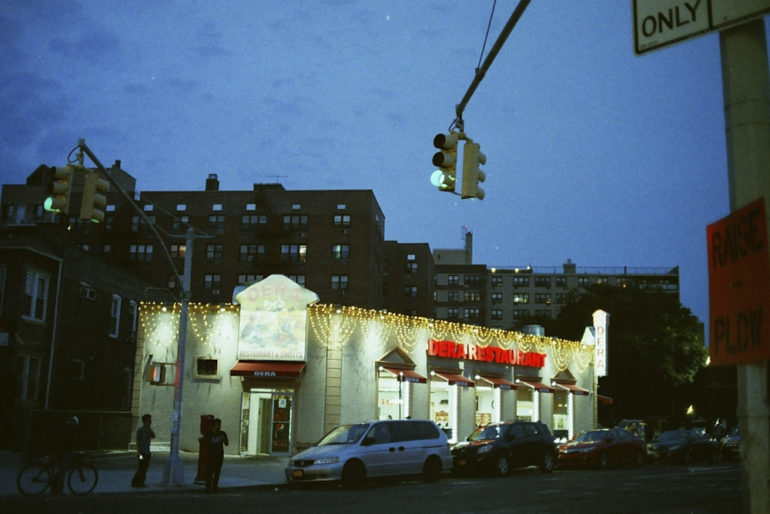

We're going to allow you make the conclusion for yourself. Merely I retrieve that it'southward very close.
Actress Image Samples

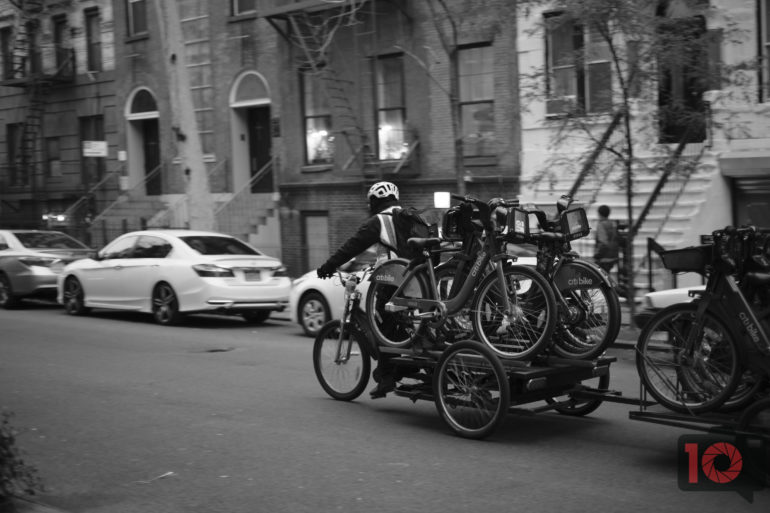
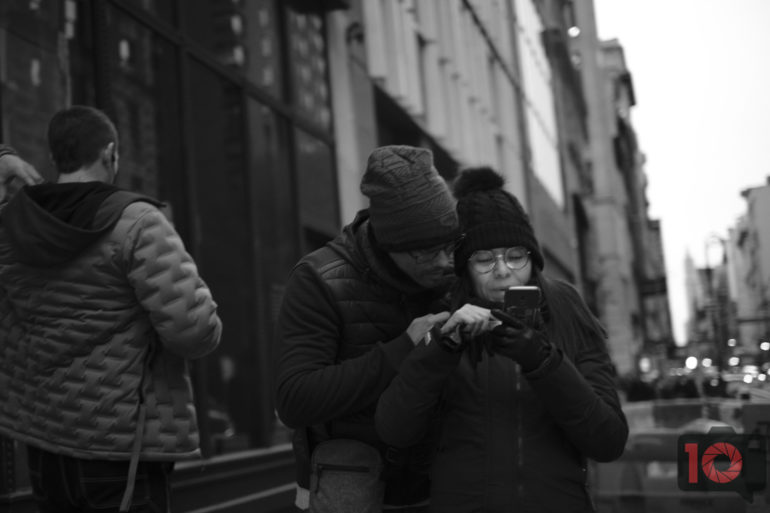
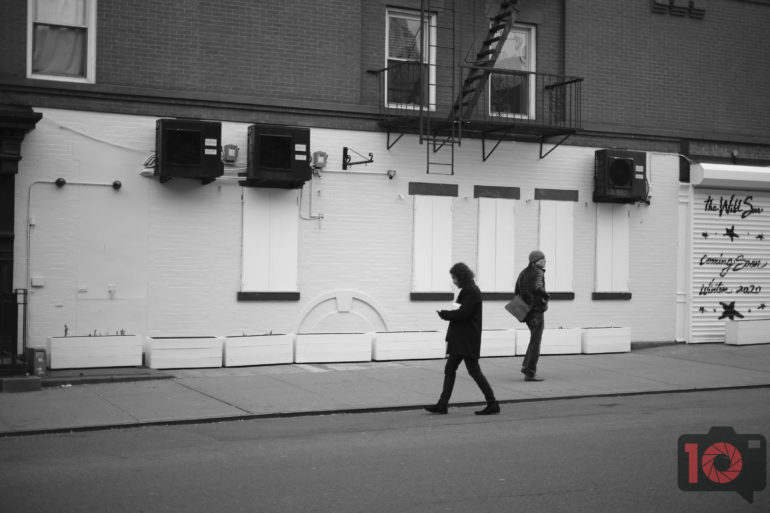

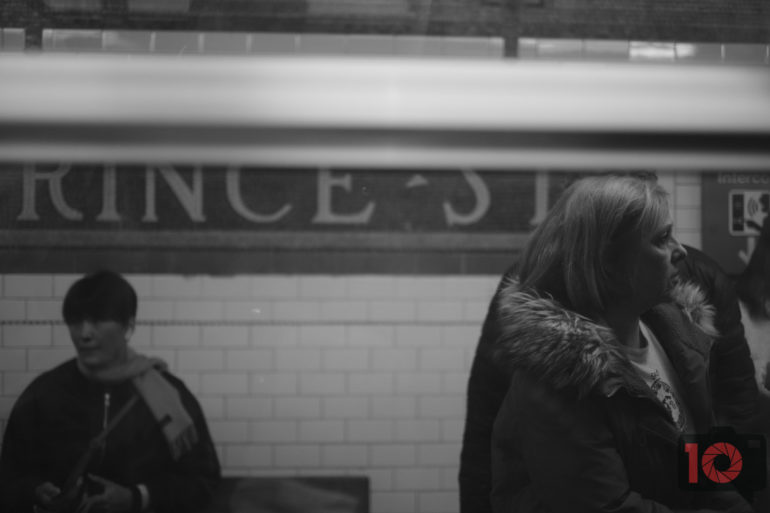
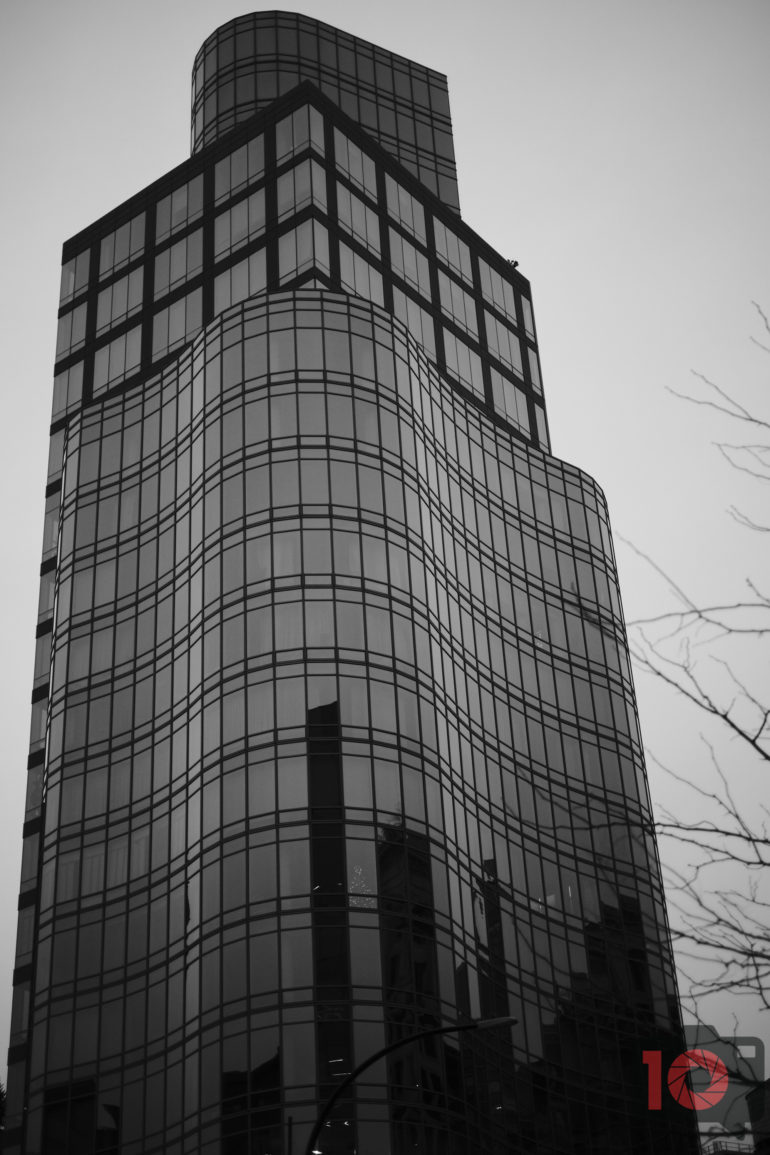
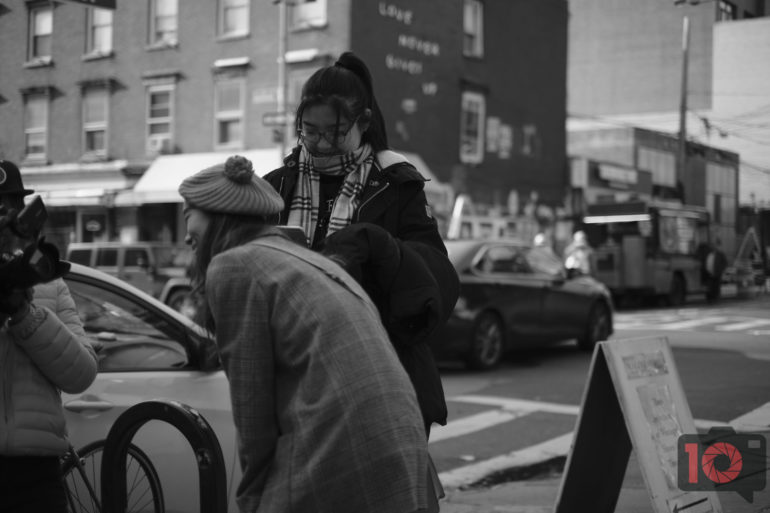
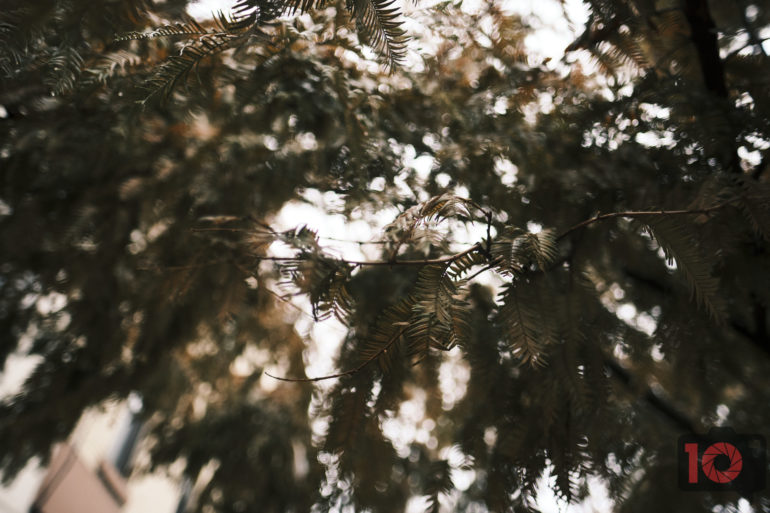



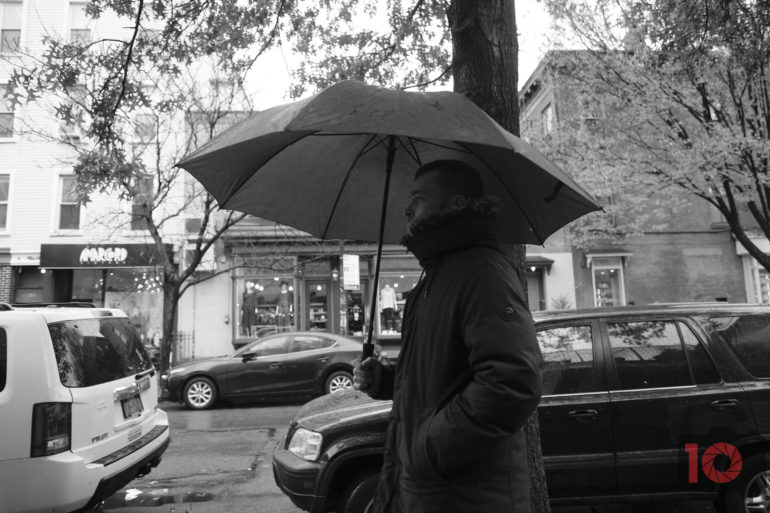

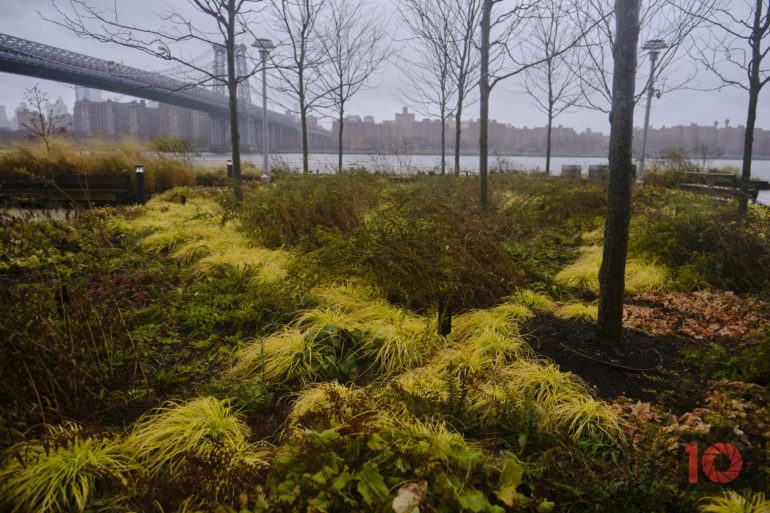
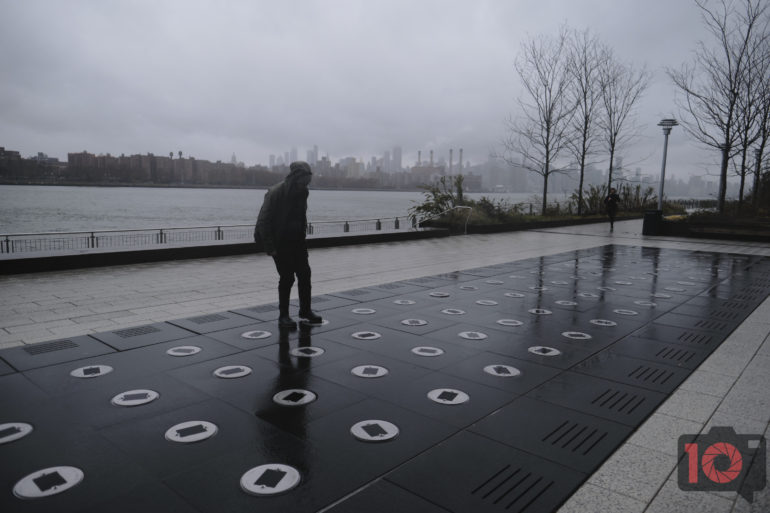
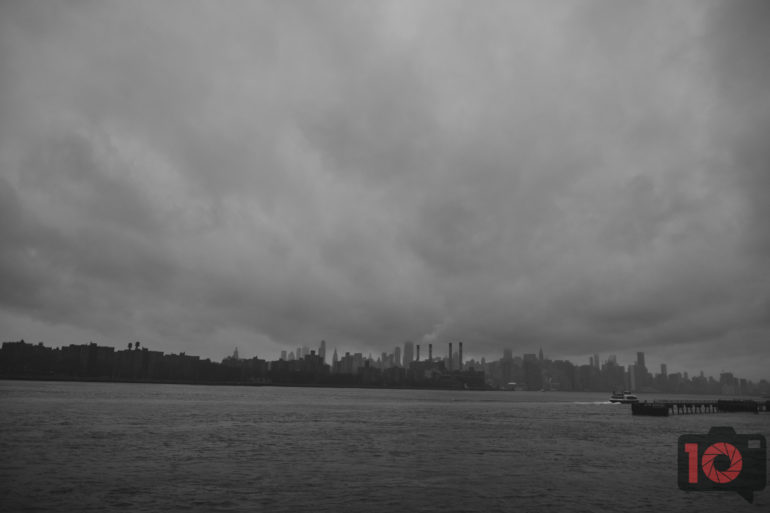


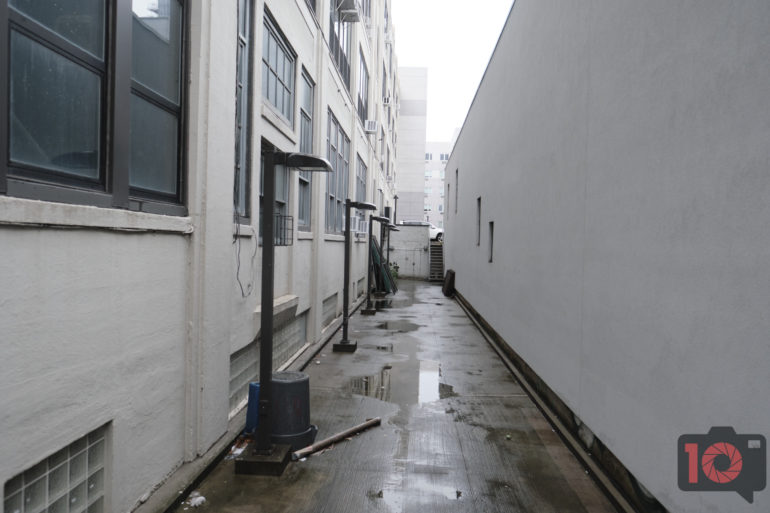

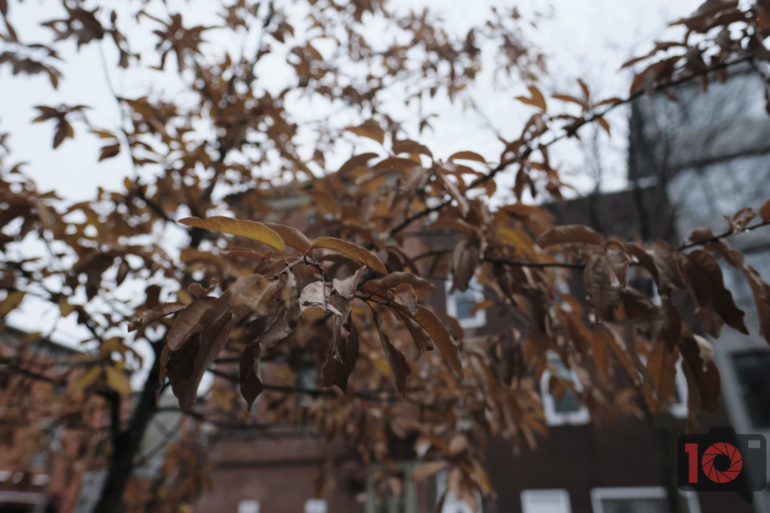

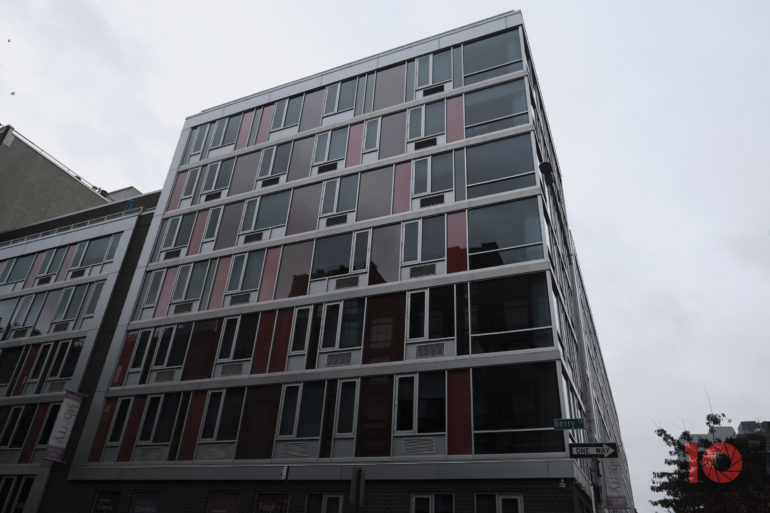







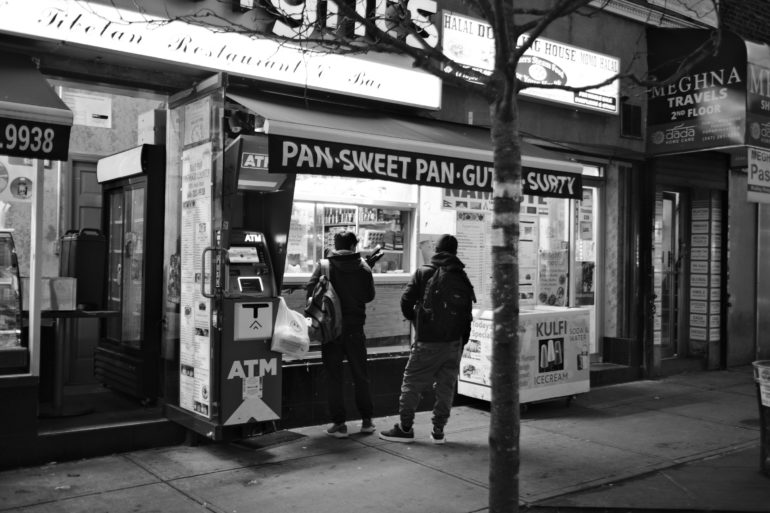



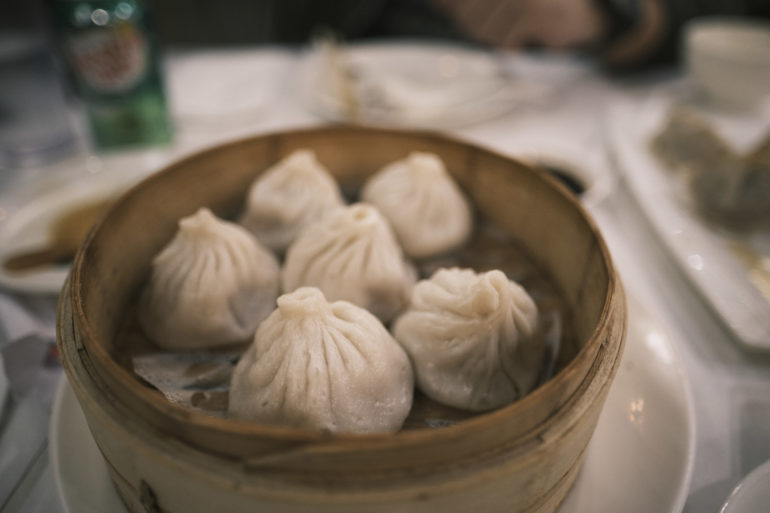

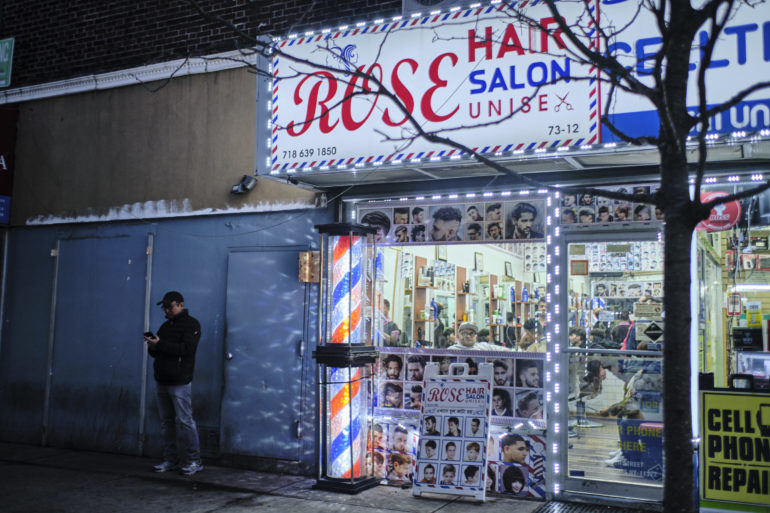

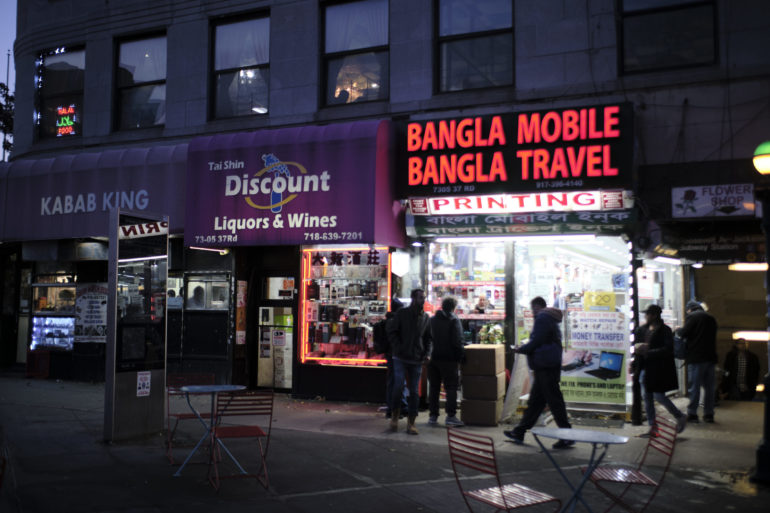





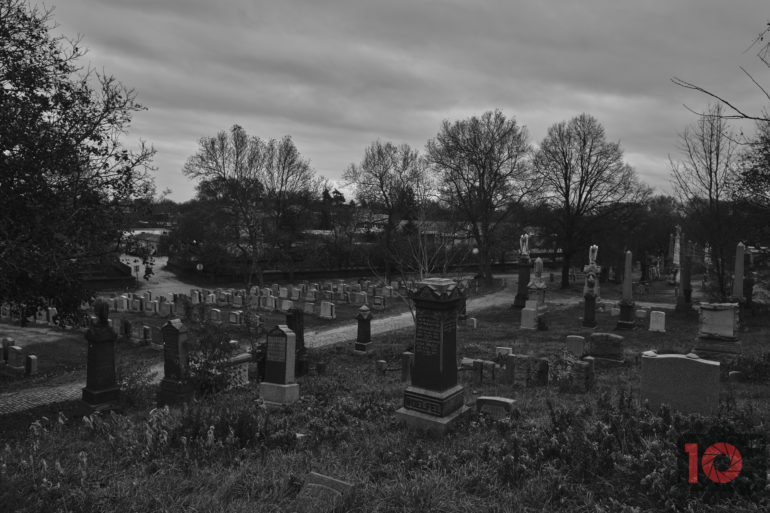

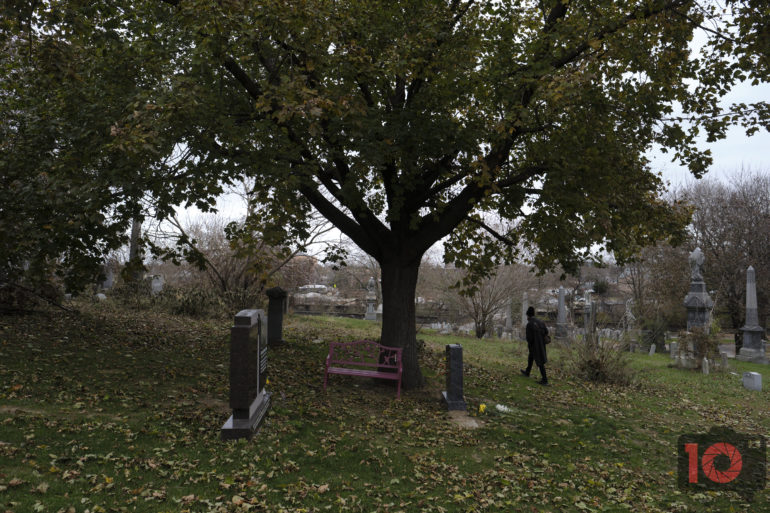
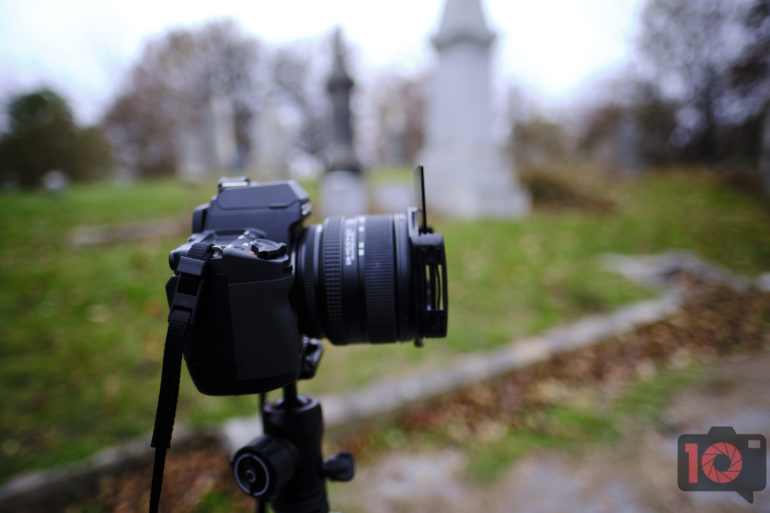
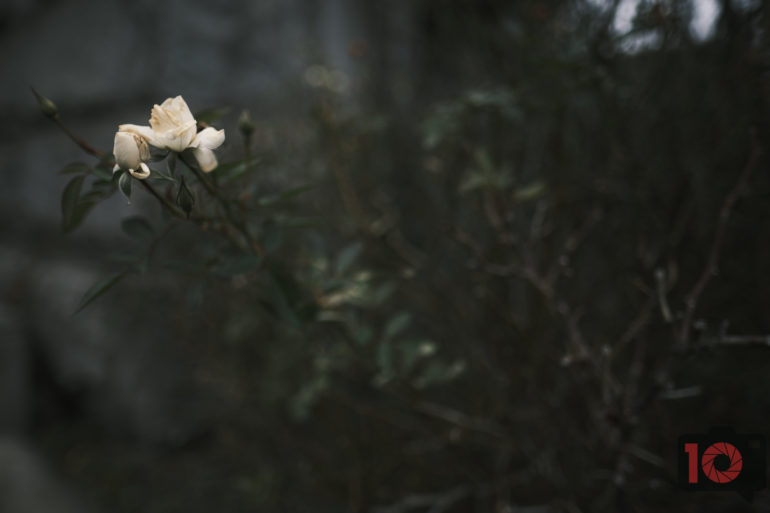
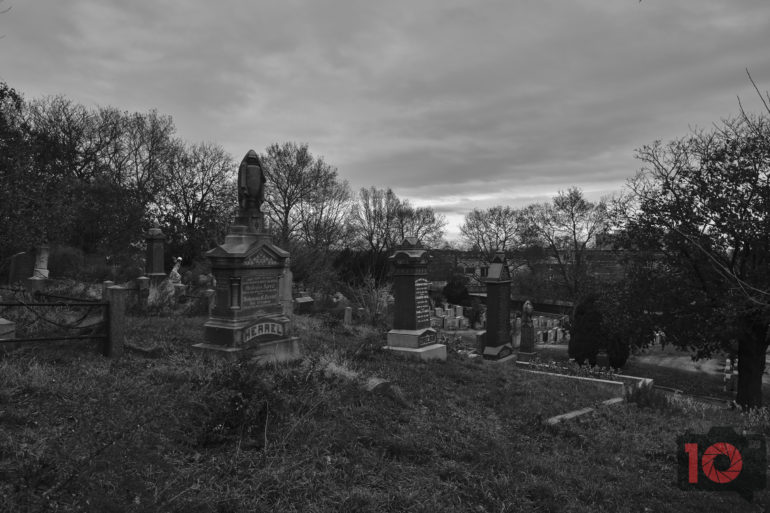

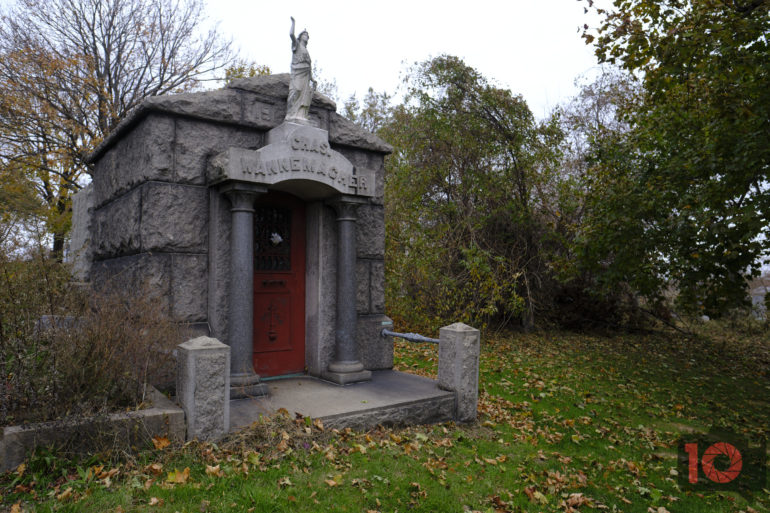
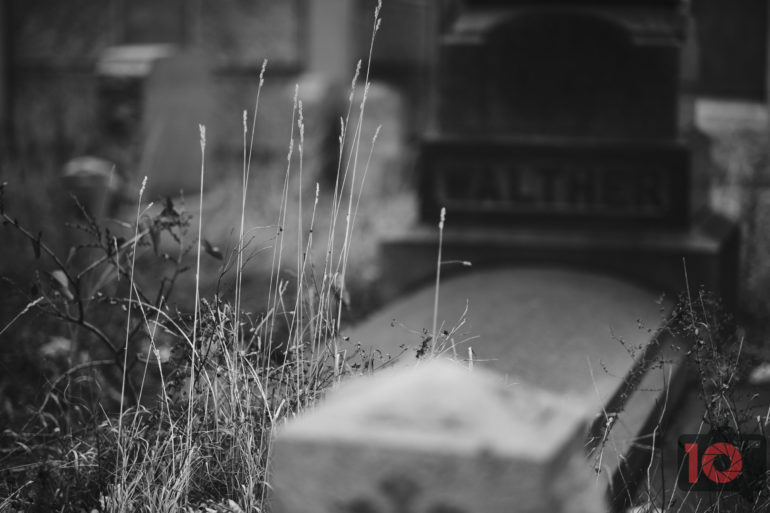
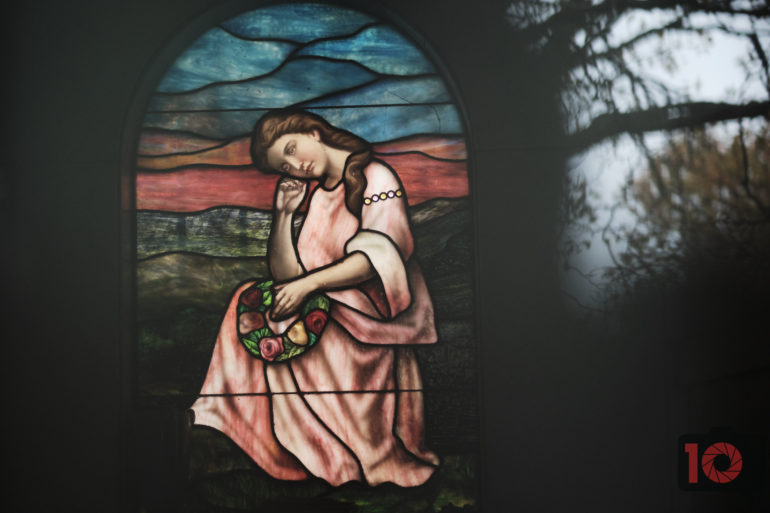
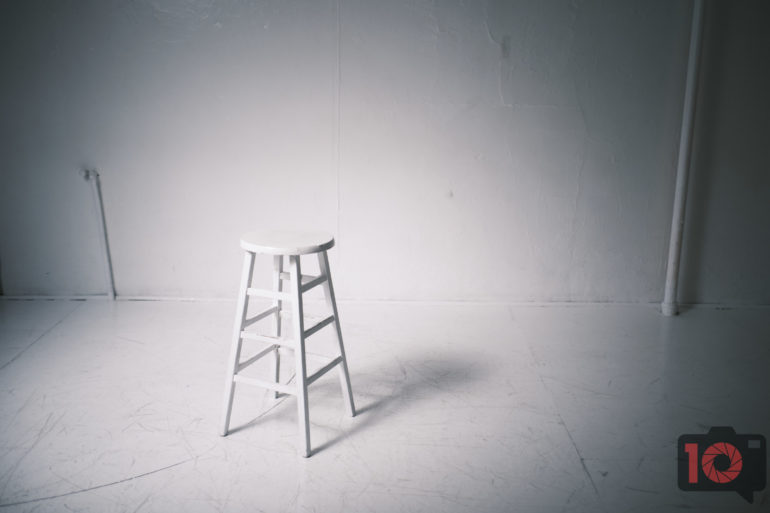




Conclusions
Likes
- With the Fujifilm X Pro three, Fujifilm is truly embracing them for themselves
- Classic Negative
- Weather condition Sealing
- Autofocus is bully where information technology counts and where you can make money
- Clarity improver means yous do less work
- Multiple Exposure Manner is wonderful for the most role
- I love that Fujifilm delivered their own take on the chimping the screen argue.
Dislikes
- The autofocus for street photography and tracking actually needs a tweak.


The Fujifilm X Pro 3 is truthfully one of the most innovative cameras to come out this year. Though Sony has been pushing the boundaries when information technology comes to innovation, Fujifilm has been doing things that no one else is. The hidden LCD screen is a brilliant innovation that keeps photographers focused on what's important. Archetype Negative and the addition of the Clarity setting will hateful that you're doing less work in post. The multiple exposure setting is one Sony refuses to return to its cameras. Though Olympus put a smaller battery in a newer camera and promised similar battery performance, Fujifilm is actually able to concur themselves to their claims. Though the Fujifilm X Pro three uses the same bombardment as its predecessors, it'southward still very efficient when information technology comes to using the battery. Result and portrait photographers will capeesh the looks they can arrive addition to the gorgeous paradigm quality overall. Couple this with the quiet mechanical shutter or the silent electronic shutter and you've got a peachy photographic camera. Then when photojournalists need to bring information technology out into the rain or rough environments, they'll exist able to trust that the gear works. In the prints, the Fujifilm Ten Pro iii really wins for loftier ISO noise over the Sony a6600. But Sony notwithstanding takes the lead when it comes to RAW file editing by simply a pilus. Perhaps the biggest problem with the Fujifilm X Pro 3 is with the autofocus in the streets. If Fujifilm can fix this via firmware updates, it will be one of the nearly perfect cameras on the market. Only to exist fair, they have the lenses that can recoup.
The Fujifilm Ten Pro 3 wins our Editor's Choice award with five out of five stars . I'thousand almost likely going to buy one. Yous can option one up at Amazon.
Source: https://www.thephoblographer.com/2019/11/26/review-fujifilm-x-pro-3-the-goat-of-fujifilm-cameras/
0 Response to "Fuji Xt3 Review or Should I Wait for Xpro3?"
Post a Comment